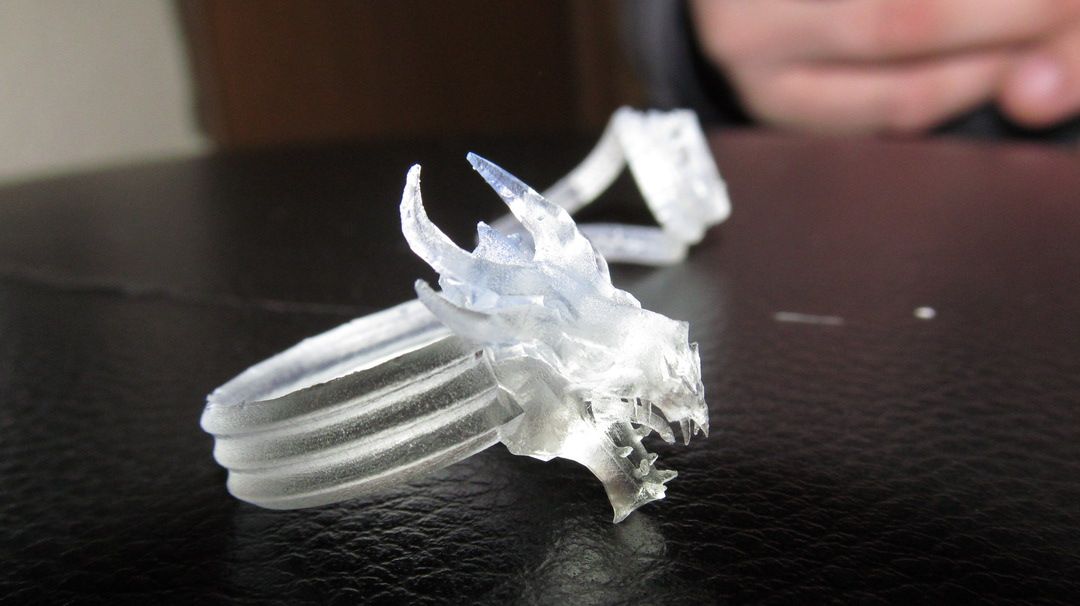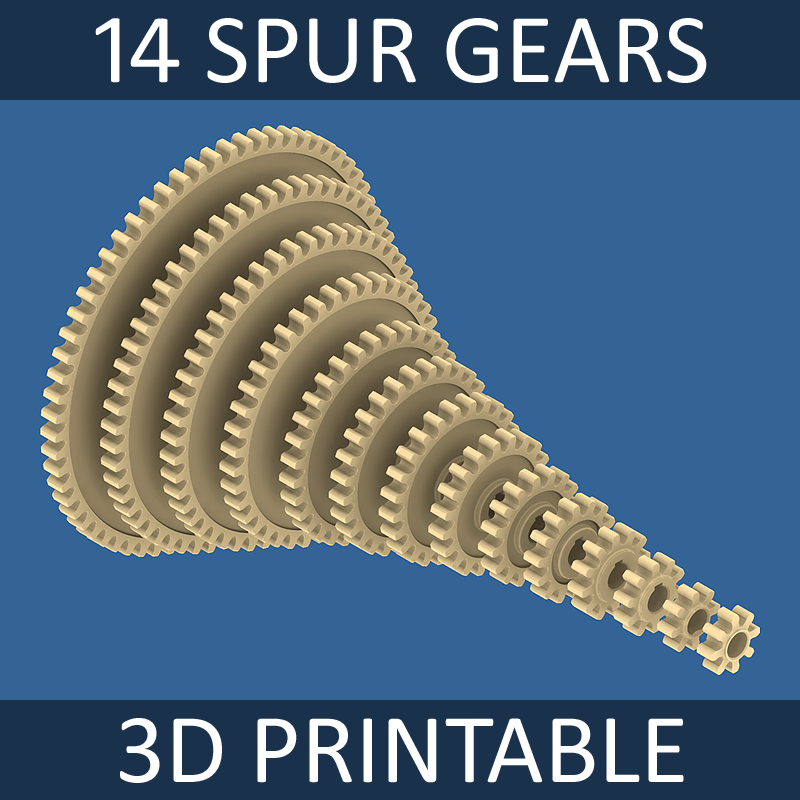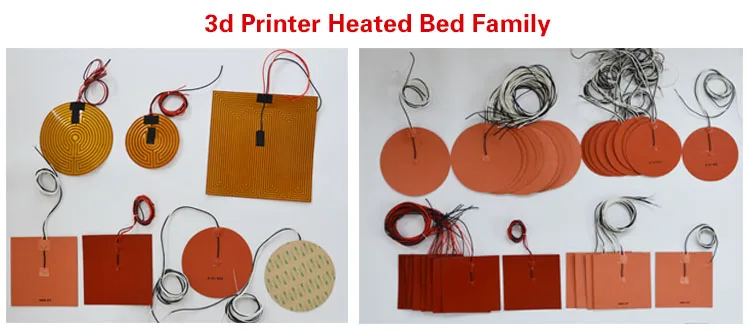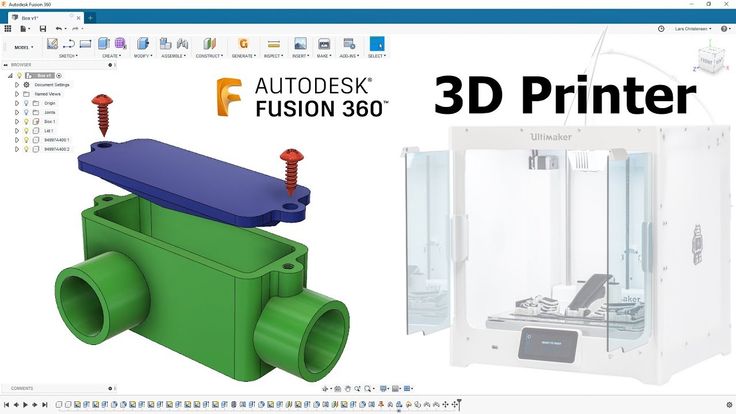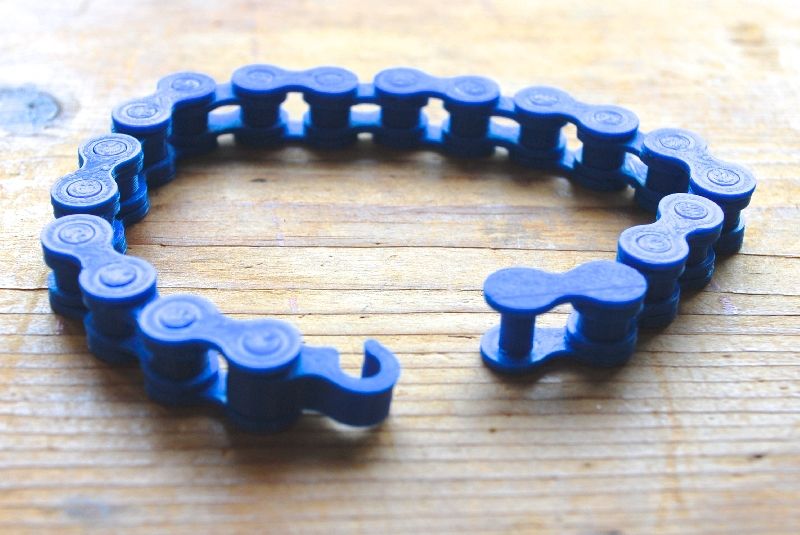3D printing material properties
Guide to 3D Printing Materials: Types, Applications, and Properties
3D printing empowers you to prototype and manufacture parts for a wide range of applications quickly and cost-effectively. But choosing the right 3D printing process is just one side of the coin. Ultimately, it'll be largely up to the materials to enable you to create parts with the desired mechanical properties, functional characteristics, or looks.
This comprehensive guide to 3D printing materials showcases the most popular plastic and metal 3D printing materials available, compares their properties, applications, and describes a framework that you can use to choose the right one for your project.
Interactive
Need some help figuring out which 3D printing material you should choose? Our new interactive material wizard helps you make the right material decisions based on your application and the properties you care the most about from our growing library of resins.
Recommend Me a Material
There are dozens of plastic materials available for 3D printing, each with its unique qualities that make it best suited to specific use cases. To simplify the process of finding the material best suited for a given part or product, let’s first look at the main types of plastics and the different 3D printing processes.
There are the two main types of plastics:
-
Thermoplastics are the most commonly used type of plastic. The main feature that sets them apart from thermosets is their ability to go through numerous melt and solidification cycles. Thermoplastics can be heated and formed into the desired shape. The process is reversible, as no chemical bonding takes place, which makes recycling or melting and reusing thermoplastics feasible. A common analogy for thermoplastics is butter, which can be melted, re-solidify, and melted again. With each melting cycle, the properties change slightly.

-
Thermosetting plastics (also referred to as thermosets) remain in a permanent solid state after curing. Polymers in thermosetting materials cross-link during a curing process that is induced by heat, light, or suitable radiation. Thermosetting plastics decompose when heated rather than melting, and will not reform upon cooling. Recycling thermosets or returning the material back into its base ingredients is not possible. A thermosetting material is like cake batter, once baked into a cake, it cannot be melted back into batter again.
The three most established plastic 3D printing processes today are the following:
-
Fused deposition modeling (FDM) 3D printers melt and extrude thermoplastic filaments, which a printer nozzle deposits layer by layer in the build area.
-
Stereolithography (SLA) 3D printers use a laser to cure thermosetting liquid resins into hardened plastic in a process called photopolymerization.
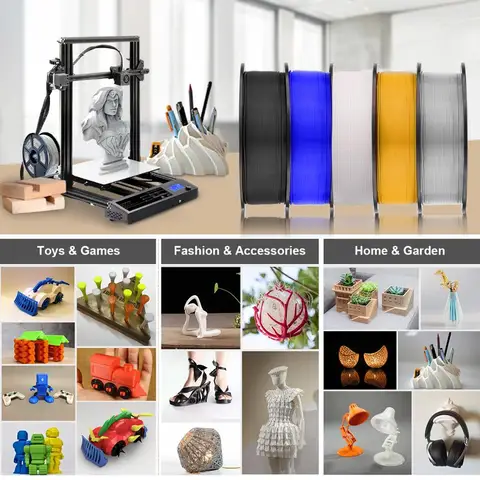
-
Selective laser sintering (SLS) 3D printers use a high-powered laser to fuse small particles of thermoplastic powder.
Video Guide
Having trouble finding the best 3D printing technology for your needs? In this video guide, we compare FDM, SLA, and SLS technologies across popular buying considerations.
Watch the Videos
Fused deposition modeling (FDM), also known as fused filament fabrication (FFF), is the most widely used form of 3D printing at the consumer level, fueled by the emergence of hobbyist 3D printers.
This technique is well-suited for basic proof-of-concept models, as well as quick and low-cost prototyping of simple parts, such as parts that might typically be machined.
Consumer level FDM has the lowest resolution and accuracy when compared to other plastic 3D printing processes and is not the best option for printing complex designs or parts with intricate features.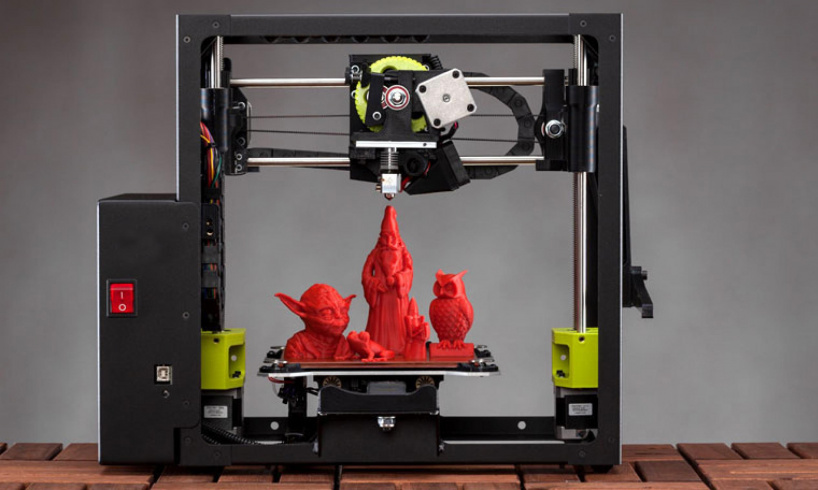 Higher-quality finishes may be obtained through chemical and mechanical polishing processes. Industrial FDM 3D printers use soluble supports to mitigate some of these issues and offer a wider range of engineering thermoplastics or even composites, but they also come at a steep price.
Higher-quality finishes may be obtained through chemical and mechanical polishing processes. Industrial FDM 3D printers use soluble supports to mitigate some of these issues and offer a wider range of engineering thermoplastics or even composites, but they also come at a steep price.
As the melted filament forms each layer, sometimes voids can remain between layers when they don’t adhere fully. This results in anisotropic parts, which is important to consider when you are designing parts meant to bear load or resist pulling.
FDM 3D printing materials are available in a variety of color options. Various experimental plastic filament blends also exist to create parts with wood- or metal-like surfaces.
The most common FDM 3D printing materials are ABS, PLA, and their various blends. More advanced FDM printers can also print with other specialized materials that offer properties like higher heat resistance, impact resistance, chemical resistance, and rigidity.
| Material | Features | Applications |
|---|---|---|
| ABS (acrylonitrile butadiene styrene) | Tough and durable Heat and impact resistant Requires a heated bed to print Requires ventilation | Functional prototypes |
| PLA (polylactic acid) | The easiest FDM materials to print Rigid, strong, but brittle Less resistant to heat and chemicals Biodegradable Odorless | Concept models Looks-like prototypes |
| PETG (polyethylene terephthalate glycol) | Compatible with lower printing temperatures for faster production Humidity and chemical resistant High transparency Can be food safe | Waterproof applications Snap-fit components |
| Nylon | Strong, durable, and lightweight Tough and partially flexible Heat and impact resistant Very complex to print on FDM | Functional prototypes Wear resistant parts |
| TPU (thermoplastic polyurethane) | Flexible and stretchable Impact resistant Excellent vibration dampening | Flexible prototypes |
| PVA (polyvinyl alcohol) | Soluble support material Dissolves in water | Support material |
| HIPS (high impact polystyrene) | Soluble support material most commonly used with ABS Dissolves in chemical limonene | Support material |
| Composites (carbon fiber, kevlar, fiberglass) | Rigid, strong, or extremely tough Compatibility limited to some expensive industrial FDM 3D printers | Functional prototypes Jigs, fixtures, and tooling |
Stereolithography was the world’s first 3D printing technology, invented in the 1980s, and is still one of the most popular technologies for professionals.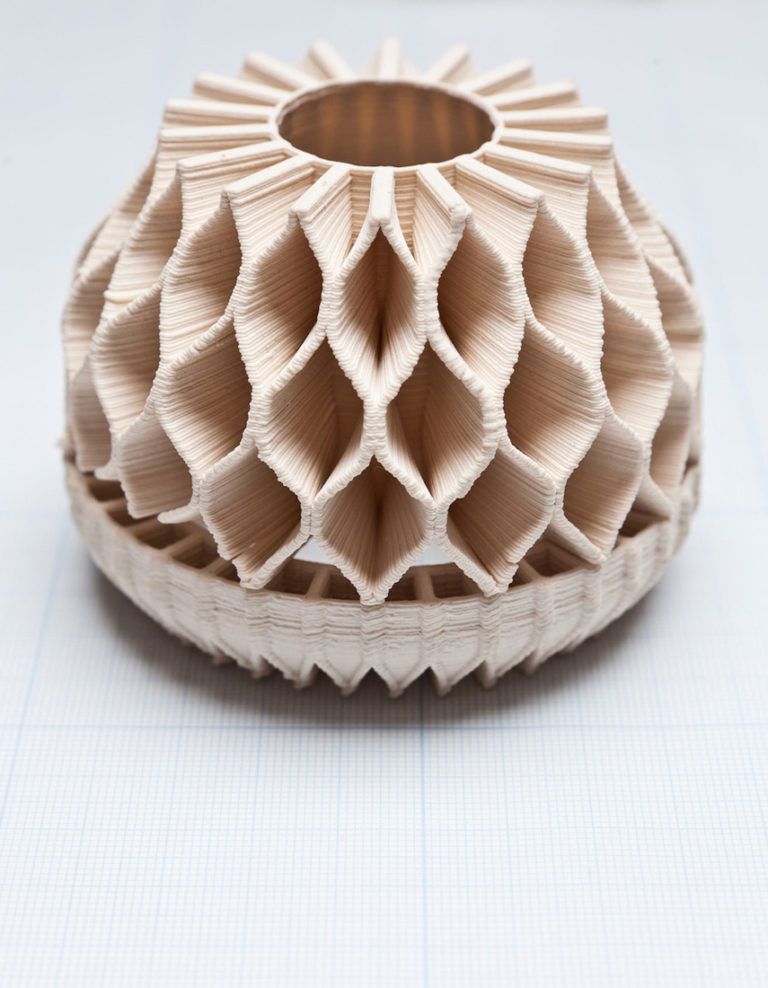
SLA parts have the highest resolution and accuracy, the clearest details, and the smoothest surface finish of all plastic 3D printing technologies. Resin 3D printing is a great option for highly detailed prototypes requiring tight tolerances and smooth surfaces, such as molds, patterns, and functional parts. SLA parts can also be highly polished and/or painted after printing, resulting in client-ready parts with high-detailed finishes.
Parts printed using SLA 3D printing are generally isotropic—their strength is more or less consistent regardless of orientation because chemical bonds happen between each layer. This results in parts with predictable mechanical performance critical for applications like jigs and fixtures, end-use parts, and functional prototyping.
SLA offers the widest range of material options for plastic 3D printing.
SLA 3D printing is highly versatile, offering resin formulations with a wide range of optical, mechanical, and thermal properties to match those of standard, engineering, and industrial thermoplastics.
| Formlabs Materials | Features | Applications |
|---|---|---|
| Standard Resins | High resolution Smooth, matte surface finish | Concept models Looks-like prototypes |
| Clear Resin | The only truly clear material for plastic 3D printing Polishes to near optical transparency | Parts requiring optical transparency Millifluidics |
| Draft Resin | One of the fastest materials for 3D printing 4x faster than standard resins, up to 10x faster than FDM | Initial Prototypes Rapid Iterations |
| Tough and Durable Resins | Strong, robust, functional, and dynamic materials Can handle compression, stretching, bending, and impacts without breaking Various materials with properties similar to ABS or PE | Housings and enclosures Jigs and fixtures Connectors Wear-and-tear prototypes |
| Rigid Resins | Highly filled, strong and stiff materials that resist bending Thermally and chemically resistant Dimensionally stable under load | Jigs, fixtures, and tooling Turbines and fan blades Fluid and airflow components Electrical casings and automotive housings |
| Polyurethane Resins | Excellent long-term durability UV, temperature, and humidity stable Flame retardancy, sterilizability, and chemical and abrasion resistance | High performance automotive, aerospace, and machinery components Robust and rugged end-use parts Tough, longer-lasting functional prototypes |
| High Temp Resin | High temperature resistance High precision | Hot air, gas, and fluid flow Heat resistant mounts, housings, and fixtures Molds and inserts |
| Flexible and Elastic Resins | Flexibility of rubber, TPU, or silicone Can withstand bending, flexing, and compression Holds up to repeated cycles without tearing | Consumer goods prototyping Compliant features for robotics Medical devices and anatomical models Special effects props and models |
| Medical and dental resins | A wide range of biocompatible resins for producing medical and dental appliances | Dental and medical appliances, including surgical guides, dentures, and prosthetics |
| Jewelry resins | Materials for investment casting and vulcanized rubber molding Easy to cast, with intricate details and strong shape retention | Try-on pieces Masters for reusable molds Custom jewelry |
| ESD Resin | ESD-safe material to improve electronics manufacturing workflows | Tooling & fixturing for electronics manufacturing Anti-static prototypes and end-use components Custom trays for component handling and storage |
| Ceramic Resin | Stone-like finish Can be fired to create a fully ceramic piece | Engineering research Art and design pieces |
Explore Formlabs SLA Materials
Sample part
See and feel Formlabs quality firsthand.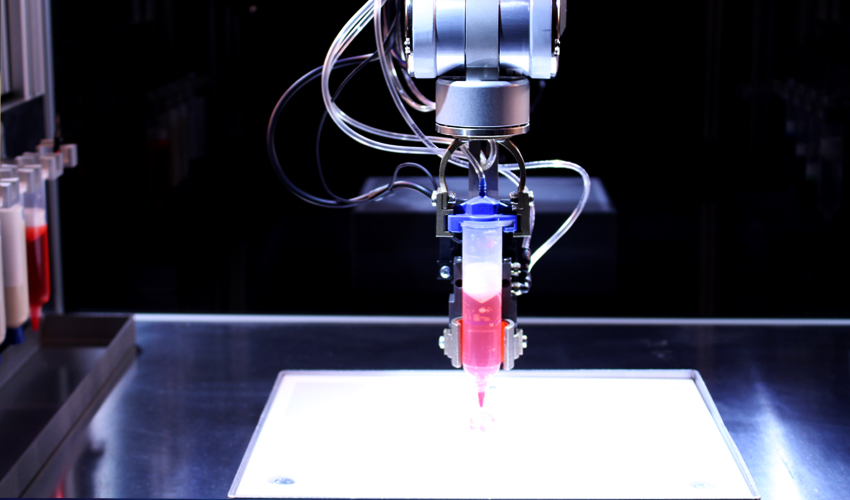 We’ll ship a free sample part to your office.
We’ll ship a free sample part to your office.
Request a Free Sample Part
Selective laser sintering (SLS) 3D printing is trusted by engineers and manufacturers across different industries for its ability to produce strong, functional parts. Low cost per part, high productivity, and established materials make the technology ideal for a range of applications from rapid prototyping to small-batch, bridge, or custom manufacturing.
As the unfused powder supports the part during printing, there’s no need for dedicated support structures. This makes SLS ideal for complex geometries, including interior features, undercuts, thin walls, and negative features.
Just like SLA, SLS parts are also generally more isotropic than FDM parts. SLS parts have a slightly rough surface finish due to the powder particles, but almost no visible layer lines.
SLS 3D printing materials are ideal for a range of functional applications, from engineering consumer products to manufacturing and healthcare.
The material selection for SLS is limited compared to FDM and SLA, but the available materials have excellent mechanical characteristics, with strength resembling injection-molded parts. The most common material for selective laser sintering is nylon, a popular engineering thermoplastic with excellent mechanical properties. Nylon is lightweight, strong, and flexible, as well as stable against impact, chemicals, heat, UV light, water, and dirt.
| Material | Description | Applications |
|---|---|---|
| Nylon 12 | Strong, stiff, sturdy, and durable Impact-resistant and can endure repeated wear and tear Resistant to UV, light, heat, moisture, solvents, temperature, and water | Functional prototyping End-use parts Medical devices |
| Nylon 11 | Similar properties to Nylon 12, but with a higher elasticity, elongation at break, and impact resistance, but lower stiffness | Functional prototyping End-use parts Medical devices |
| TPU | Flexible, elastic, and rubbery Resilient to deformation High UV stability Great shock absorption | Functional prototyping Flexible, rubber-like end-use parts Medical devices |
| Nylon composites | Nylon materials reinforced with glass, aluminum, or carbon fiber for added strength and rigidity | Functional prototyping Structural end-use parts |
Explore Formlabs SLS Materials
Sample part
See and feel Formlabs SLS quality firsthand.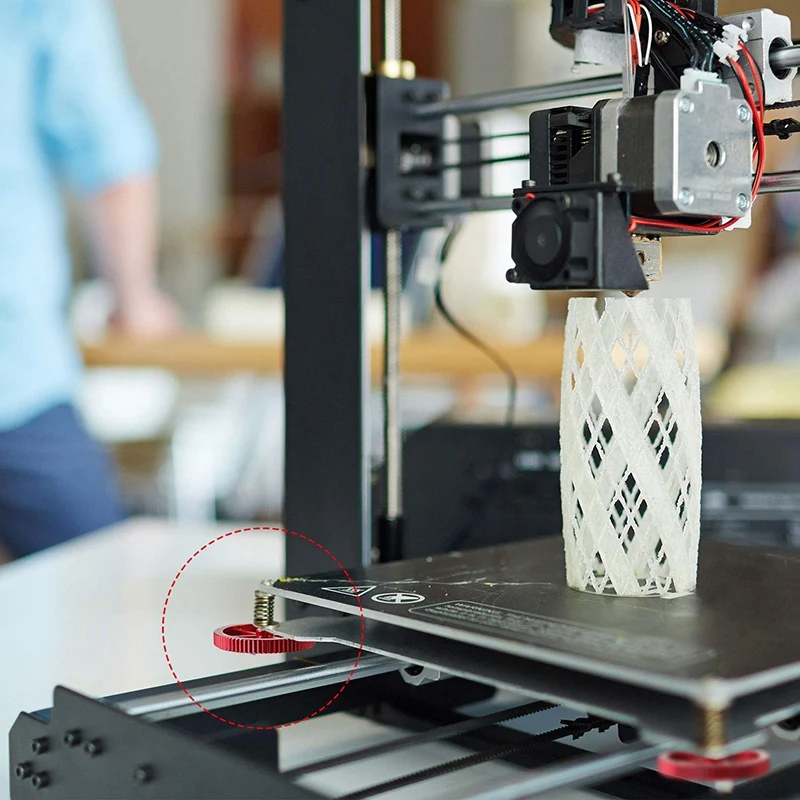 We’ll ship a free sample part to your office.
We’ll ship a free sample part to your office.
Request a Free Sample Part
Different 3D printing materials and processes have their own strengths and weaknesses that define their suitability for different applications. The following table provides a high level summary of some key characteristics and considerations.
| FDM | SLA | SLS | |
|---|---|---|---|
| Pros | Low-cost consumer machines and materials available | Great value High accuracy Smooth surface finish Range of functional materials | Strong functional parts Design freedom No need for support structures |
| Cons | Low accuracy Low details Limited design compatibility High cost industrial machines if accuracy and high performance materials are needed | Sensitive to long exposure to UV light | More expensive hardware Limited material options |
| Applications | Low-cost rapid prototyping Basic proof-of-concept models Select end-use parts with high-end industrial machines and materials | Functional prototyping Patterns, molds, and tooling Dental applications Jewelry prototyping and casting Models and props | Functional prototyping Short-run, bridge, or custom manufacturing |
| Materials | Standard thermoplastics, such as ABS, PLA, and their various blends on consumer level machines.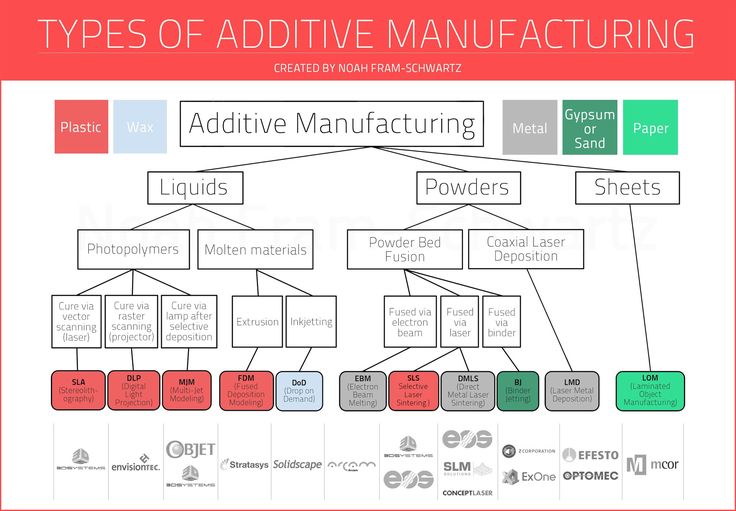 High performance composites on high cost industrial machines High performance composites on high cost industrial machines | Varieties of resin (thermosetting plastics). Standard, engineering (ABS-like, PP-like, flexible, heat-resistant), castable, dental, and medical (biocompatible). | Engineering thermoplastics. Nylon 11, Nylon 12, and their composites, thermoplastic elastomers such as TPU. |
Beyond plastics, there are multiple 3D printing processes available for metal 3D printing.
-
Metal FDM
Metal FDM printers work similarly to traditional FDM printers, but use extrude metal rods held together by polymer binders. The finished “green” parts are then sintered in a furnace to remove the binder.
SLM and DMLS printers work similarly to SLS printers, but instead of fusing polymer powders, they fuse metal powder particles together layer by layer using a laser. SLM and DMLS 3D printers can create strong, accurate, and complex metal products, making this process ideal for aerospace, automotive, and medical applications.
-
Titanium is lightweight and has excellent mechanical characteristics. It is strong, hard and highly resistant to heat, oxidation, and acid.
-
Stainless steel has high strength, high ductility, and is resistant to corrosion.
-
Aluminum is a lightweight, durable, strong, and has good thermal properties.
-
Tool steel is a hard, scratch-resistant material that you can use to print end-use tools and other high-strength parts..
- Nickel alloys have high tensile, creep and rupture strength and are heat and corrosion resistant.
Compared to plastic 3D printing technologies, metal 3D printing is substantially more costly and complex, limiting its accessibility to most businesses.
Alternatively, SLA 3D printing is well-suited for casting workflows that produce metal parts at a lower cost, with greater design freedom, and in less time than traditional methods.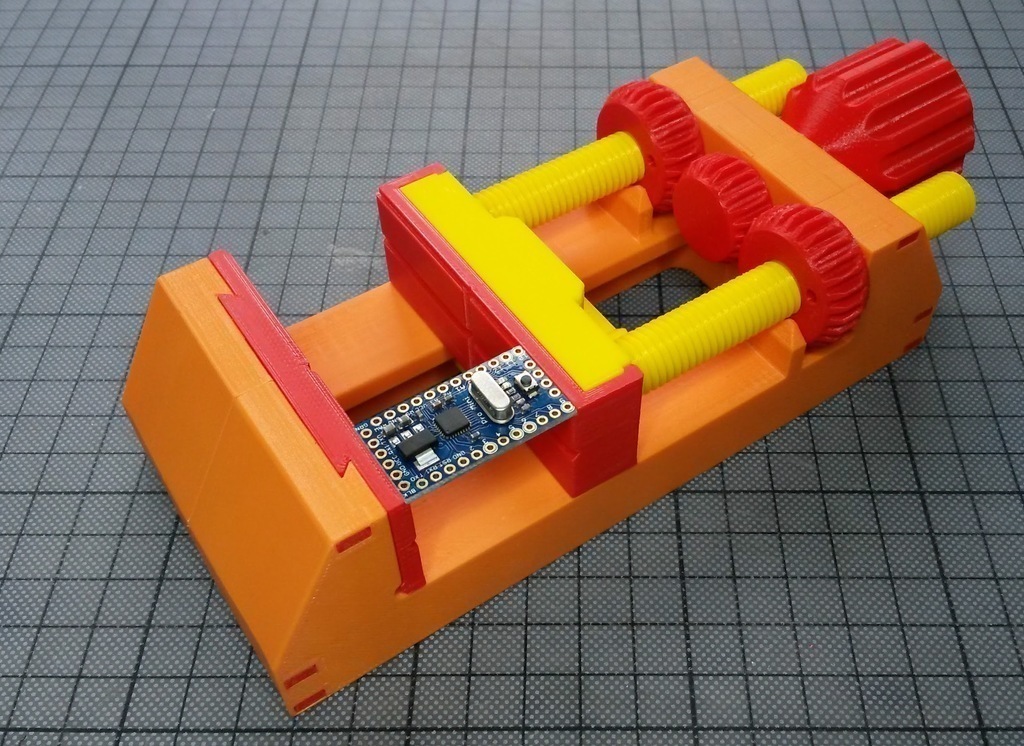
Another alternative is electroplating SLA parts, which involves coating a plastic material in a layer of metal via electrolysis. This combines some of the best qualities of metal—strength, electrical conductivity, and resistance to corrosion and abrasion—with the specific properties of the primary (usually plastic) material.
Plastic 3D printing is well-suited to create patterns that can be cast to produce metal parts.
With all these materials and 3D printing options available, how can you make the right selection?
Here’s our three-step framework to choose the right 3D printing material for your application.
Plastics used for 3D printing have different chemical, optical, mechanical, and thermal characteristics that determine how the 3D printed parts will perform. As the intended use approaches real-world usage, performance requirements increase accordingly.
| Requirement | Description | Recommendation |
|---|---|---|
| Low performance | For form and fit prototyping, conceptual modeling, and research and development, printed parts only need to meet low technical performance requirements.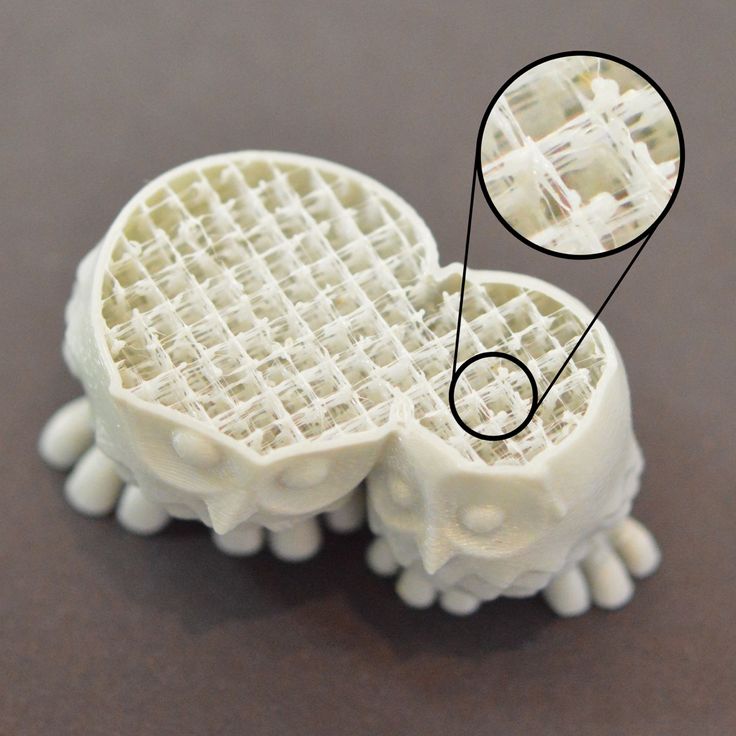 Example: A form prototype of a soup ladle for ergonomic testing. No functional performance requirements needed besides surface finish. | FDM: PLA SLA: Standard Resins, Clear Resin (transparent part), Draft Resin (fast printing) |
| Moderate performance | For validation or pre-production uses, printed parts must behave as closely to final production parts as possible for functional testing but do not have strict lifetime requirements. Example: A housing for electronic components to protect against sudden impact. Performance requirements include ability to absorb impact, housing needs to snap together and hold its shape. | FDM: ABS SLA: Engineering Resins SLS: Nylon 11, Nylon 12, TPU |
| High performance | For end-use parts, final 3D printed production parts must stand up to significant wear for a specific time period, whether that’s one day, one week, or several years. Example: Shoe outsoles. | FDM: Composites SLA: Engineering, Medical, Dental, or Jewelry Resins SLS: Nylon 11, Nylon 12, TPU, nylon composites |
Once you’ve identified the performance requirements for your product, the next step is translating them into material requirements—the properties of a material that will satisfy those performance needs. You’ll typically find these metrics on a material’s data sheet.
| Requirement | Description | Recommendation |
|---|---|---|
| Tensile strength | Resistance of a material to breaking under tension. High tensile strength is important for structural, load bearing, mechanical, or statical parts. | FDM: PLA SLA: Clear Resin, Rigid Resins SLS: Nylon 12, nylon composites |
| Flexural modulus | Resistance of a material to bending under load. Good indicator for either the stiffness (high modulus) or the flexibility (low modulus) of a material. Good indicator for either the stiffness (high modulus) or the flexibility (low modulus) of a material. | FDM: PLA (high), ABS (medium) SLA: Rigid Resins (high), Tough and Durable Resins (medium), Flexible and Elastic Resins (low) SLS: nylon composites (high), Nylon 12 (medium) |
| Elongation | Resistance of a material to breaking when stretched. Helps you compare flexible materials based on how much they can stretch. Also indicates if a material will deform first, or break suddenly. | FDM: ABS (medium), TPU (high) SLA: Tough and Durable Resins (medium), Polyurethane Resins (medium), Flexible and Elastic Resins (high) SLS: Nylon 12 (medium), Nylon 11 (medium), TPU (high) |
| Impact strength | Ability of a material to absorb shock and impact energy without breaking. Indicates toughness and durability, helps you figure out how easily a material will break when dropped on the ground or crashed into another object.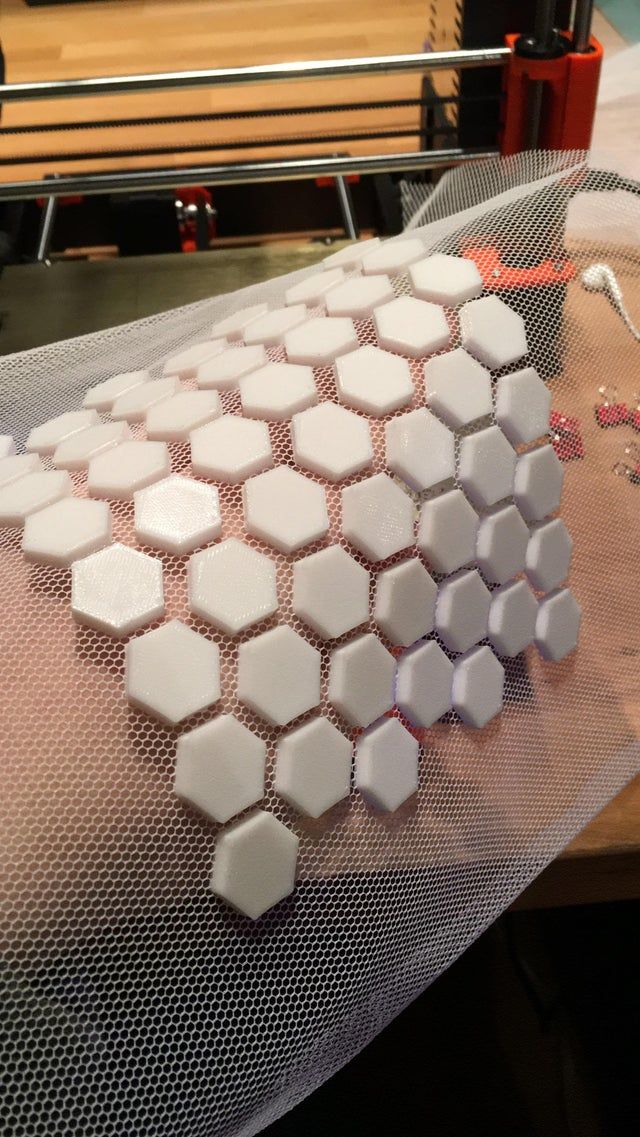 | FDM: ABS, Nylon SLA: Tough 2000 Resin, Tough 1500 Resin, Grey Pro Resin, Durable Resin, Polyurethane Resins SLS: Nylon 12, Nylon 11, nylon composites |
| Heat deflection temperature | Temperature at which a sample deforms under a specified load. Indicates if a material is suitable for high temperature applications. | SLA: High Temp Resin, Rigid Resins SLS: Nylon 12, Nylon 11, nylon composites |
| Hardness (durometer) | Resistance of a material to surface deformation. Helps you identify the right “softness” for soft plastics, like rubber and elastomers for certain applications. | FDM: TPU SLA: Flexible Resin, Elastic Resin SLS: TPU |
| Tear strength | Resistance of a material to growth of cuts under tension. Important to assess the durability and the resistance to tearing of soft plastics and flexible materials, such as rubber. | FDM: TPU SLA: Flexible Resin, Elastic Resin, Durable Resin SLS: Nylon 11, TPU |
| Creep | Creep is the tendency of a material to deform permanently under the influence of constant stress: tensile, compressive, shear, or flexural.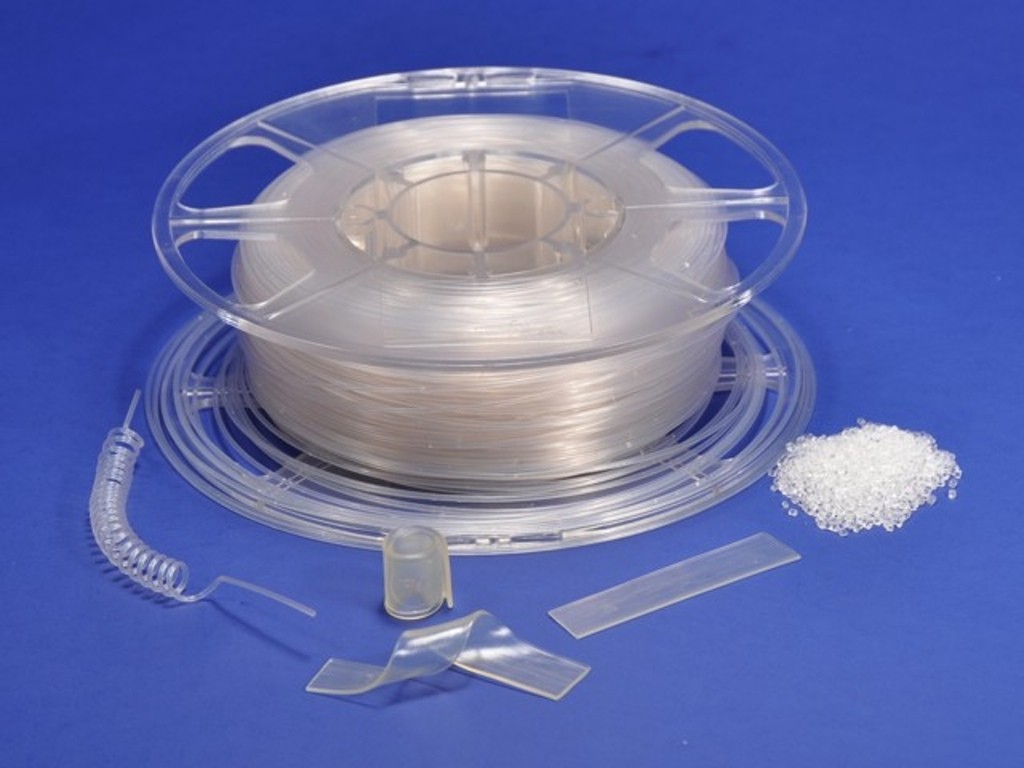 Low creep indicates longevity for hard plastics and is crucial for structural parts. Low creep indicates longevity for hard plastics and is crucial for structural parts. | FDM: ABS SLA: Polyurethane Resins, Rigid Resins SLS: Nylon 12, Nylon 11, nylon composites |
| Compression set | Permanent deformation after material has been compressed. Important for soft plastics and elastic applications, tells you if a material will return to its original shape after the load is removed. | FDM: TPU SLA: Flexible Resin, Elastic Resin SLS: TPU |
For even more details on material properties, read our guide to about the most common mechanical and thermal properties.
Once you translate performance requirements to material requirements, you’ll most likely end up with a single material or a smaller group of materials that could be suitable for your application.
If there are multiple materials that fulfil your basic requirements, you can then look at a wider range of desired characteristics and consider the pros, cons, and trade-offs of the given materials and processes to make the final choice.
Try our interactive material wizard to find materials based on your application and the properties you care the most about from our growing library of materials. Do you have specific questions about 3D printing materials? Contact our experts.
Recommend Me a Material
What are Mechanical Properties in 3D Printing?
When it comes to determining the suitability of a 3D printing material for a project, you need to know how hard, how strong and how flexible that material is. These things are referred to as the ‘mechanical properties’ of a material.
The phrase “good mechanical properties” is widely used in the 3D printing industry. However, it is a generic phrase that fails to describe the unique characteristics of a material. It is also important to consider that “good” does not mean “suitable”, since all materials have different properties for different applications.
Pictured above: A snapshot of the mechanical properties of Ultimaker CPE+, taken from the material’s technical data sheet.
You can find out the mechanical properties of a 3D printing material, by downloading its ‘data sheet’. Data sheets, or technical data sheets, provide data on the mechanical and thermal properties of a material. However, they don’t make it clear what each data set means. With that in mind, we have provided some useful information about mechanical properties below, to help you better understand what they are and how they translate to a material’s character.
Material Hardness
The hardness of a 3D printing material is usually measured using the Rockwell scale, or the Shore durometer. For instance, Ultimaker CPE+ has a hardness of 111 on the Rockwell scale, while Ultimaker ABS has a hardness of 97 on the Shore durometer. Both tests measure the hardness of a material, by testing its resistance to indentation. The harder a material is, then the more resistant it will be to changes in shape when a compressive force is applied.
The hardness of a material is measured using the Rockwell scale, or the Shore hardness scale.
Tensile strength at yield
Tensile strength at yield refers to the amount of stress a material can withstand before permanent deformation. A good example of this is if you imagine a rubber tube that is being stretched out. If you removed the pressure on the tube, then it would return to its original shape. However, if the stress on the tube kept increasing, then it would reach a point of deformation, rendering it incapable of springing back to its original shape.
The tensile strength at yield of a material is measured in megapascals (MPa).
Tensile strength at break
Tensile strength at break refers to the amount of force that can be applied to an object or material before it breaks. Coming back to our rubber tube example, if you kept increasing the pressure on it, then it would go beyond the point of deformation and break, because the molecules of the material would be unable to counter the external forces being applied. The force required to break the rubber tube is then used as that material’s tensile strength at break rating.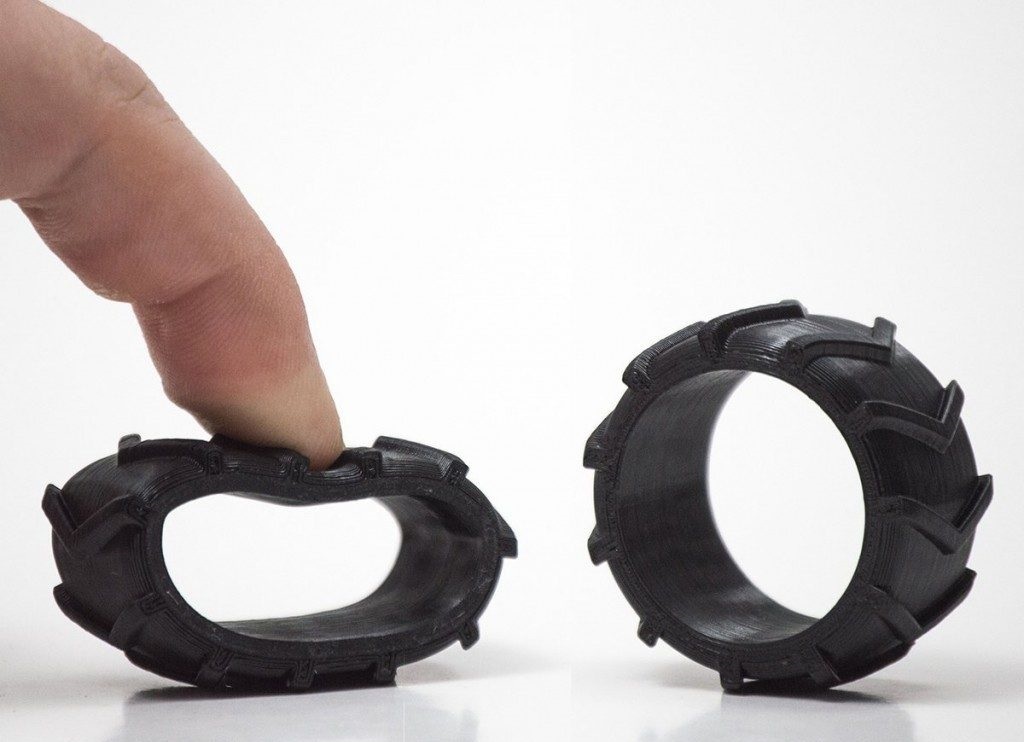
The tensile strength at break of a material is measured in megapascals (MPa).
In the video below, you can see a carbon fibre chain link printed by a Markforged 3D printer being put to the test. If you watch the video closely, you can see the chain link slowly deform, before breaking.
Elongation at yield
Elongation at yield, or tensile elongation at yield, refers to the ratio between the initial length and the increased length of a material at its yield point (which as we covered above, is the point that a material deforms – but does not break). In the simplest terms, elongation at yield is a measurement of a material’s ability to resist changes in shape before it deforms permanently. A good example would be if you stretched an elastic band out. Eventually, the band would deform.
The elongation at yield rating of a material is measured as a percentage.
Elongation at break
Elongation at break, or tensile elongation at break, refers to the ratio between the initial length and the increased length of a material at its break point. So, this is a measurement of a material’s ability to resist changes in shape before it breaks. For example, if you were to stretch an elastic band out as far as you could, it would eventually break. With both elongation at break and elongation at yield ratings, the more flexible a material is, the higher its elongation will be.
The elongation at break rating of a material is measured as a percentage.
Flexural strength
Flexural strength, also known as bend strength, is a measurement used to define a material’s tendency to bend. It is a ratio of stress to strain in flexural deformation. This measurement is widely used with materials that deform significantly, but will not break. It is a useful measurement to know, since it defines a material’s ability to resist failure in bending.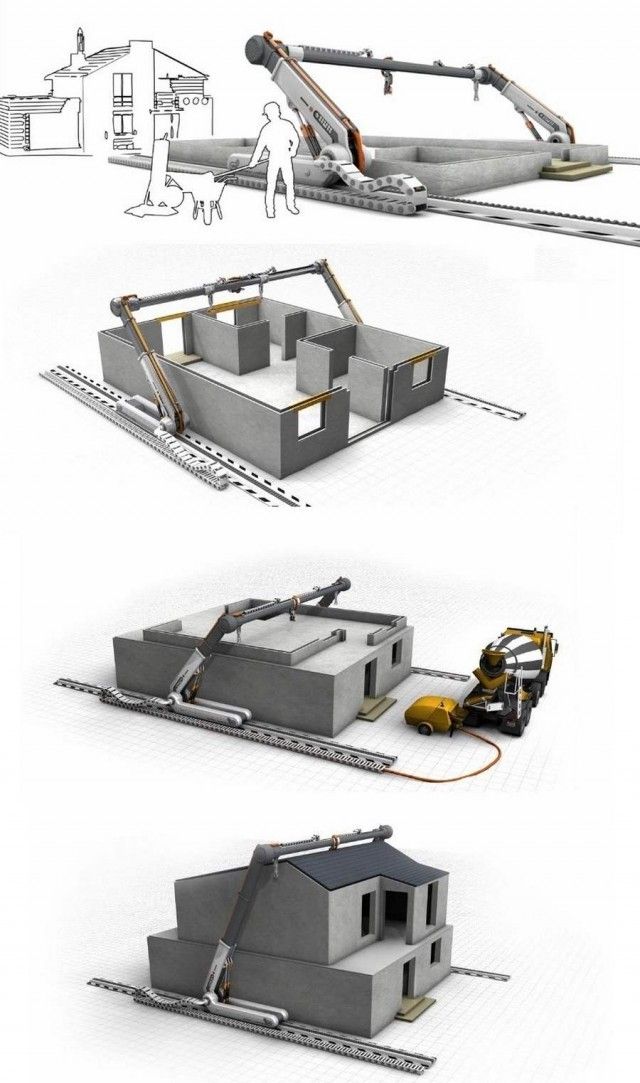 An example of a test to find a material’s flexural strength, would be to bend a plastic stick with your hands until it deformed.
An example of a test to find a material’s flexural strength, would be to bend a plastic stick with your hands until it deformed.
The flexural strength of a material is measured in megapascals (MPa).
types, applications and features
3D printing enables rapid and cost-effective prototyping and production of models for a wide range of applications. But choosing the right 3D printing technology is only one side of the coin. Ultimately, the ability to create models with the required mechanical properties, functional characteristics or appearance will depend on the materials.
This comprehensive guide provides information on the most popular plastic and metal 3D printing materials available, compares their properties and applications, and provides guidance on how to select the most suitable material for your project. nine0003
Interactive Material
Need help choosing your 3D printing material? Our new interactive materials wizard will help you select the right material from our growing range of polymers, based on your intended application and the properties that matter most to you.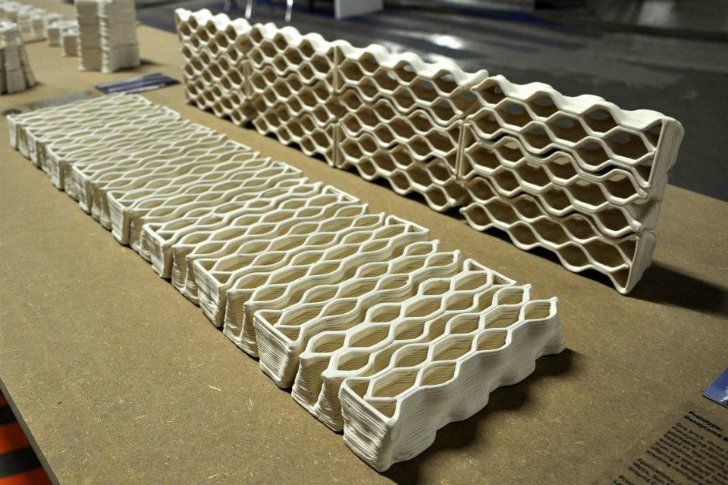
Get material recommendations
Dozens of plastic materials are available for 3D printing. Each of them has unique properties suitable for specific applications. To make it easier to find the best material for a particular model or product, let's first look at the main types of plastics and the various 3D printing processes. nine0003
There are two main types of plastics:
-
thermoplastics are the most common type of plastics. The main feature that distinguishes them from thermosetting plastics is their ability to withstand multiple melting and solidification cycles. Thermoplastics can be heated and shaped into desired shapes. This process is reversible because no chemical bond is formed. As a result, they can be recycled or melted down and reused. Thermoplastics can be compared to butter: it melts and hardens many times. With each melting cycle, the properties of thermoplastics change slightly. nine0003
-
thermoset plastics (also called thermosets) remain permanently solid after polymerization.
 The polymers in thermosetting plastics are crosslinked during the polymerization process, which is induced by heat, light, or appropriate radiation. Thermoset plastics decompose when heated, rather than melt. In addition, they do not change their shape when cooled. It is not possible to recycle thermosetting plastics or restore the material to its original state. Thermosetting is like pie dough: once baked, the pie cannot be melted back into dough. nine0003
The polymers in thermosetting plastics are crosslinked during the polymerization process, which is induced by heat, light, or appropriate radiation. Thermoset plastics decompose when heated, rather than melt. In addition, they do not change their shape when cooled. It is not possible to recycle thermosetting plastics or restore the material to its original state. Thermosetting is like pie dough: once baked, the pie cannot be melted back into dough. nine0003
The three most common plastic 3D printing processes today are:
-
Fused Deposition Modeling (FDM) 3D printers melt and extrude thermoplastic filaments, which the printer's nozzle deposits layer by layer on the work area.
-
The Stereolithography (SLA) 3D Printer uses a laser to photopolymerize thermoset liquid polymers into a hardened plastic. nine0003
-
The Selective Laser Sintering (SLS) 3D Printer is equipped with a high power laser to sinter fine particles of thermoplastic powder.

How-to video
Can't find the 3D printing technology that best suits your needs? In this video tutorial, we compare Fused Deposition Modeling (FDM), Stereolithography (SLA), and Selective Laser Sintering (SLS) technologies in terms of the top factors to consider when purchasing. nine0003
Watch video
Fused fusion modeling (FDM), also known as fused filament manufacturing (FFF), is the most common form of consumer grade 3D printing, fueled by the rise of hobbyist 3D printers.
This method is well suited for making basic experimental models, as well as for quickly and inexpensively prototyping simple products, such as parts that are usually machined. nine0003
Consumer grade FDM has the lowest resolution and accuracy of any other plastic 3D printing process, making it unsuitable for printing complex designs or models with intricate features. It is possible to improve the surface quality of models printed using this technology using chemical and mechanical polishing processes.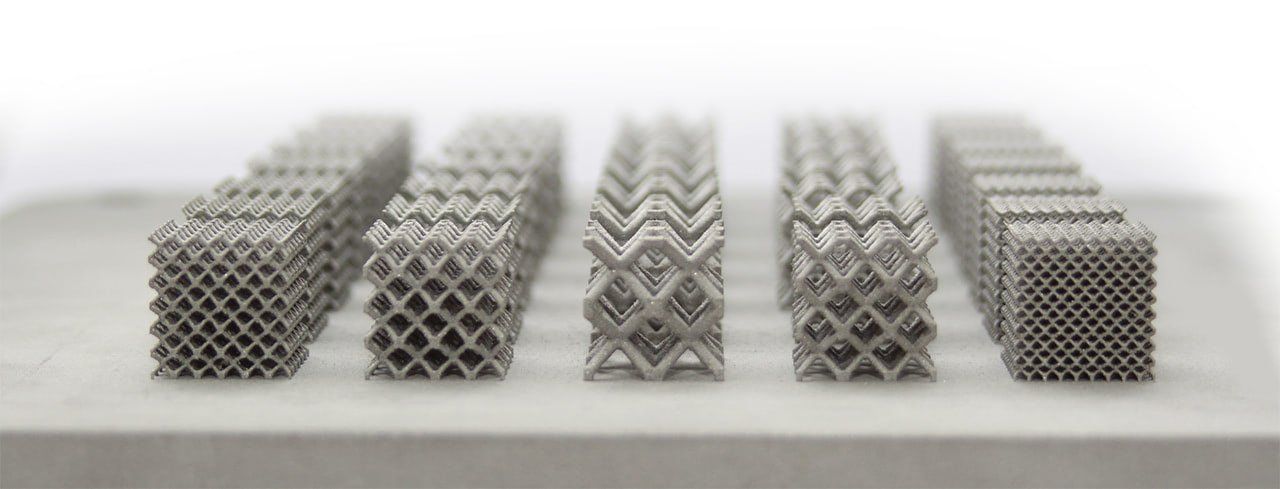 FDM-based industrial 3D printers, which offer a wider range of engineering thermoplastics, can solve these problems, but are also much more expensive. nine0003
FDM-based industrial 3D printers, which offer a wider range of engineering thermoplastics, can solve these problems, but are also much more expensive. nine0003
Each layer is formed with a thermoplastic thread. Sometimes, if the layers are not completely adjacent to each other, there may be voids between them. As a result, anisotropic models are obtained, which is important to consider when designing products that must withstand load and be resistant to tension.
FDM 3D printing materials are available in a variety of colors. There are also various experimental mixtures of thermoplastic threads designed to create models with a surface that mimics wood or metal. nine0003
The most common materials for 3D printing in FDM technology are ABS (acrylonitrile butadiene styrene), PLA (polylactic acid) and various mixtures of these polymers. More advanced FDM printers can also print on other materials with different properties, such as increased temperature and chemical resistance, impact resistance, and rigidity.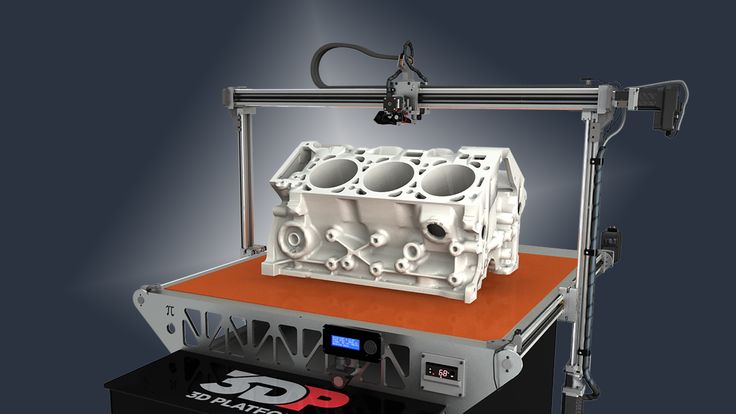
| Material | Features | Methods of use | |||||
|---|---|---|---|---|---|---|---|
| ABS (acrylonitril-butadien-styrol) | Strong and durable Thermal and impact-resistant need for a heated printing platform | Easiest media to print with FDM technology Strong, tough but brittle Less resistant to temperature and chemicals The biodegradable does not have a smell of | Conceptual models Realistic prototypes | ||||
| PETG (polyethylenertalatlatglycol) | is compatible with low printing temperatures . | Waterproof application Clip-on components | |||||
| nylon | Hard, durable and light Strong and partially flexible heat -resistant and impact -resistant Complex for printing using FDM | Functional Prototypes Basement models | |||||
| TPU (thermal polyurate) | 9008 9008 9008 9008 9008 9008 9008 9008 Excellent vibration dampingFlexible Prototypes | ||||||
| PVA (polyvinyl alcohol) | Soluble support structure material The material for supporting structures | ||||||
| impact -resistant polystyrene | The material for creating soluble supporting structures, the most commonly used with ABS | Material for supporting structures | |||||
Composit materials (carbon, composite composite materials are dissolved in water. Kevlar, fiber optic) Kevlar, fiber optic) | Strong, tough and incredibly hard Only compatible with some expensive industrial 3D printers based on FDM technology | Functional prototypes Clamping fixtures, fixtures, tooling |
Invented in the 1980s, stereolithography is the world's first 3D printing technology and is still one of the most popular among professionals today.
Models printed with stereolithography printers have the highest resolution and accuracy, the sharpest detail and the smoothest surface of any other plastic 3D printing technology. Resin 3D printing is a great option for producing highly detailed prototypes that require tight tolerances and smooth surfaces such as molds, templates, and functional models. Models printed using SLA technology can be easily polished and/or painted after printing, resulting in highly detailed finished products. nine0003
Models printed on SLA 3D printers are generally isotropic: their strength is more or less constant and independent of orientation, since chemical bonds occur between each layer.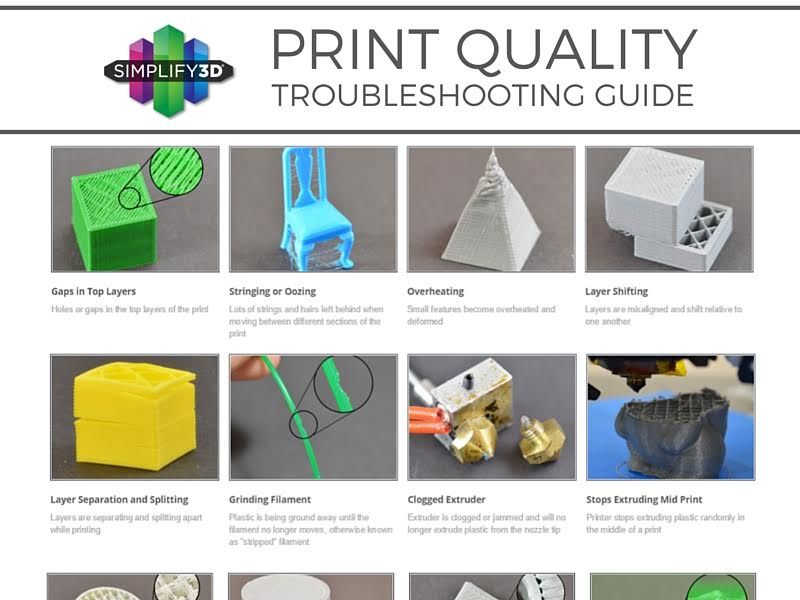 This results in models with predictable mechanical characteristics critical for applications such as fasteners, fixtures, finished products, and functional prototypes.
This results in models with predictable mechanical characteristics critical for applications such as fasteners, fixtures, finished products, and functional prototypes.
Stereolithography supports a wide range of plastic 3D printing materials. nine0003
SLA 3D printing is versatile and provides a wide range of optical, mechanical and thermal properties that match those of standard, engineering and industrial thermoplastics.
| Materials of FORMLABS | Characteristics | Methods of use | |
|---|---|---|---|
| Standard polymers | High resolution Smote, matte surface | Conceptual models 958 Conceptual models | Conceptual Models Realistic prototypes |
| Clear Resin | The only truly transparent material for 3D printing from plastics can be polished to almost complete optical transparency | models, which should be optically transparent | |
| DRAFT REDI | One of the fastest 3D printing materials Prints 4x faster than standard resins and 10x faster than FDM | Initial prototypes Rapid iterations | |
| Tough Resin and Durable Resin | Materials that are tough, strong, functional and dynamic Able to withstand compression, tension, bending and impact without breaking Various materials with properties similar to ABS | Enclosures and Enclosures Clamps and Mounting Devices Connectors Wear Prototypes | |
| Rigid Resins | Highly filled, stiff and strong material, resistant to bending Resistant to temperature and chemicals Maintains dimension under load | Clamping and clamping fixtures, tooling Turbines and fan blades Fluid/air components Electrical enclosures and enclosures used in the automotive industry | |
| High Temp Resin | High temperature resistant High Precision | Hot Air, Gas, and Liquid Components Heat Resistant Fasteners, Housings, and Fixtures Molds and Inserts | |
| Flexible Resin and Elastic Resin | Flexibility of Rubber, TPU, or Silicone compression Withstand many successive cycles without wear | Consumer product prototypes Foldable structures for robotics Medical devices and anatomy models Props and models for special effects | |
| Medical and dental resins | A wide range of biocompatible resins for the manufacture of medical and dental products | Dental and medical products, including surgical templates, dentures and prosthetic limbs | |
| Lost Wax and Vulcanized Rubber Casting Materials Easy to cast, allows for intricate designs and retains shape well | Products for trying on Models for reusable press forms Jewelry to order | ||
| Ceramic Resin | Surface System, similar to the Firing Personal Product, the possibility of firing for creating a real ceramic product | Technical survival Unique articles 908 |
Sample
Experience Formlabs print quality for yourself.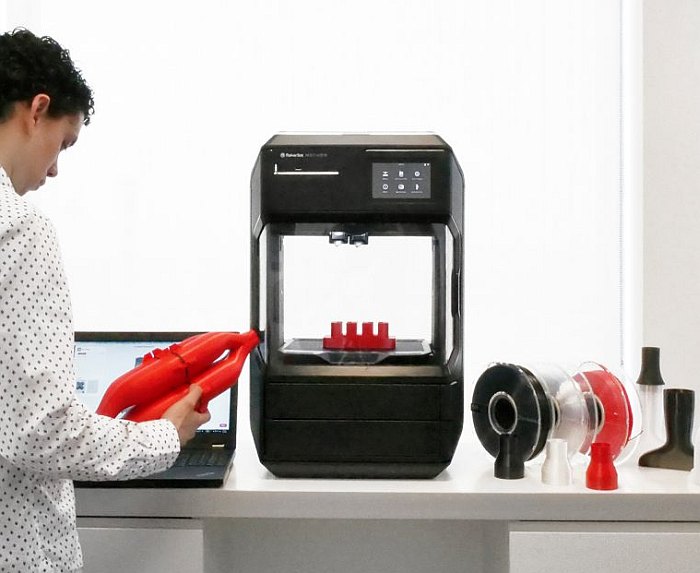 We will send a free print sample directly to your office. nine0003
We will send a free print sample directly to your office. nine0003
Request a free sample
Selective laser sintering (SLS) 3D printing is a technology trusted by engineers and manufacturers across industries to create durable and functional models. With its low model cost, high performance, and use of common materials, this technology is well suited for a wide range of applications, from rapid prototyping to low-volume production, limited trial runs, or custom-made products. nine0003
The green powder supports the model during printing and eliminates the need for special support structures. As a result, SLS is ideal for complex geometries, including internal features, undercuts, thin walls, and negative draft features.
Like stereolithography, SLS produces more isotropic models than FDM models. Models created with SLS technology have a slightly rough surface due to powder particles, but have almost no visible layer lines. nine0003
SLS 3D printing materials are ideal for a range of functional applications, from consumer product design to manufacturing and healthcare applications.
Compared to FDM and SLA technologies, SLS technology allows the use of a limited number of materials. However, the available materials have excellent mechanical properties. They have strength comparable to die-cast models. The most common selective laser sintering material is nylon, a popular engineering thermoplastic with excellent mechanical properties. Nylon is light, strong and flexible, resistant to impact, heat, chemicals, UV radiation, water and dirt. nine0003
| Material | Description | Methods of use |
|---|---|---|
| Nylon 12 Powder | Strong, hard and durable Siberian, Solp. water | Functional prototypes End use products Medical devices |
| Nylon 11 Powder | Similar properties to Nylon 12 Powder. Possesses greater elasticity, elongation at break and impact resistance, but less rigidity | Functional prototypes Products for the final use of Medical devices |
| TPU | Flexible, elastic, elastic resistant to deformation High resistance to ultraviolet Excellent damping capacity | .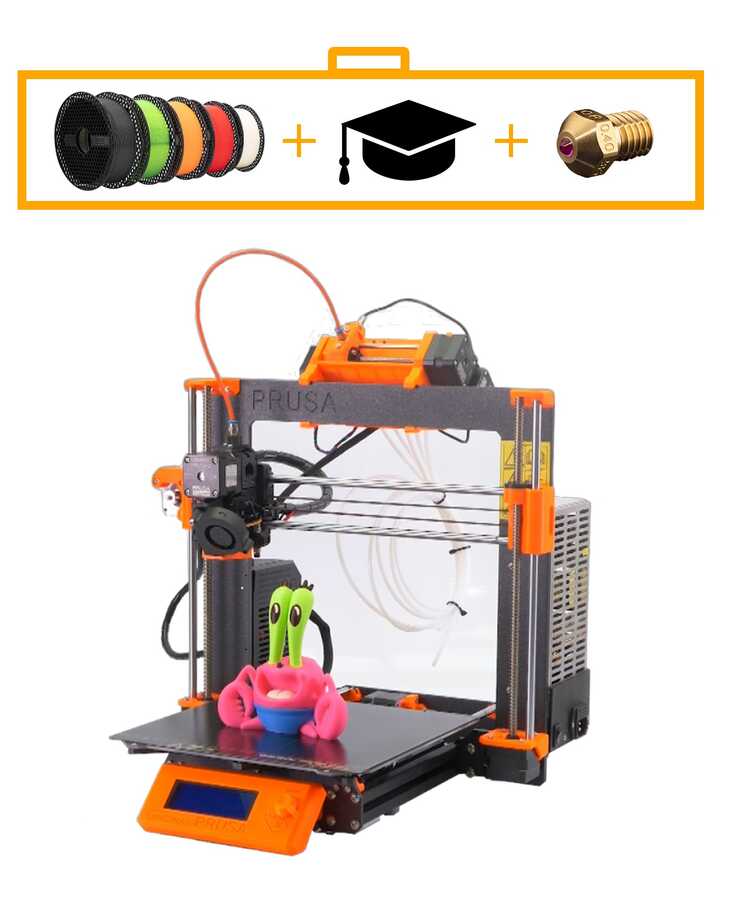 end use end use Medical devices |
| Nylon composites | Nylon materials reinforced with glass, aluminum or fiberglass for greater strength and rigidity | Functional Prototypes Structural End-Use Products |
Sample
Experience Formlabs SLS print quality for yourself. We will send a free print sample directly to your office.
Request a free sample
Different 3D printing materials and processes have their own advantages and disadvantages that make them suitable for different scenarios. The following table provides a brief overview of some of the main features and factors to consider. nine0092
Poor detail
Limited conformance to design design
High cost of industrial devices if precision and high performance materials are required
Basic experimental models
Production of special end-use products using professional industrial devices and materials
Templates, molds and tooling
Dental products
Prototypes and molds for casting jewelry
Props and models
Small-scale production, production of limited trial runs, creation of products to order
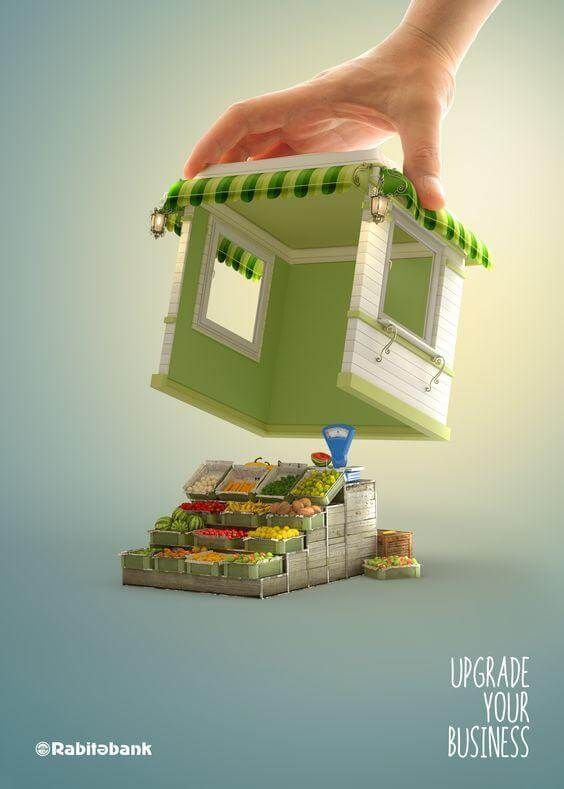 High performance composite materials on high value industrial applications
High performance composite materials on high value industrial applications There are several 3D printing processes not only from plastics, but also from metals.
Metal FDM printers are similar in design to traditional FDM printers, but use extruded metal rods held in place by a resin binder. The finished models are in an intermediate state and then sintered in an oven to remove the binder.
SLM and DMLS printers are similar to SLS printers, but instead of polymer powders, they fuse metal powder particles layer by layer using a laser. 3D printers based on SLM and DMLS technologies can create strong, precise and complex metal products, making this process ideal for the aerospace, automotive and medical industries.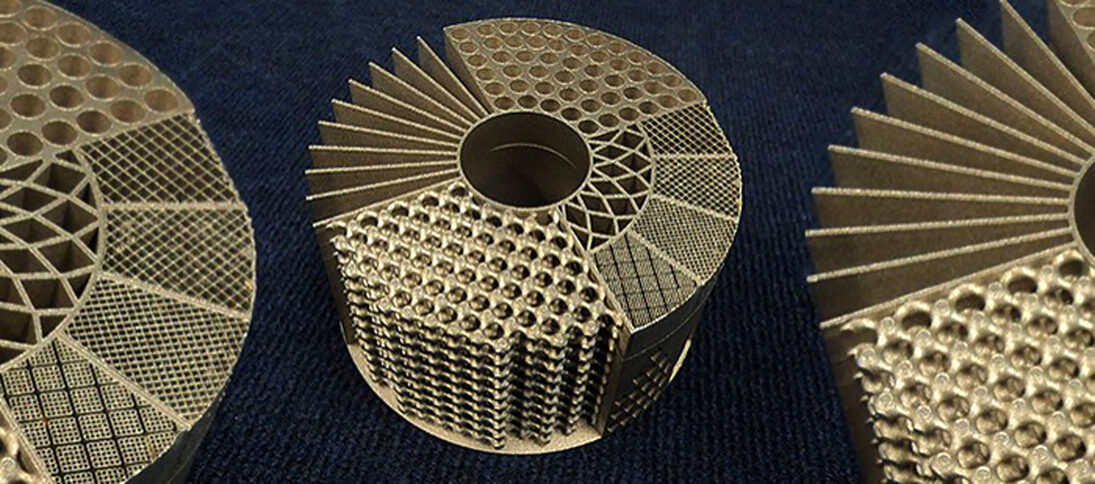
-
Titanium is a light metal with excellent mechanical properties. It is strong, hard and highly resistant to heat, oxidation and acids. nine0003
-
stainless steel has high strength, ductility and corrosion resistance.
-
aluminum is a lightweight, durable, strong metal with good thermal properties.
-
Tool Steel is a hard, scratch-resistant material that can be used to print end-use tools and other high-strength products. nine0003
- nickel alloys have high tensile, creep and tensile strength, as well as heat and corrosion resistance.
Compared to plastic 3D printing technologies, metal 3D printing is much more expensive and difficult, and therefore beyond the reach of most companies.
As an alternative to casting workflows that produce metal models cheaper and faster than traditional methods and provide greater design freedom, SLA 3D printing is well suited.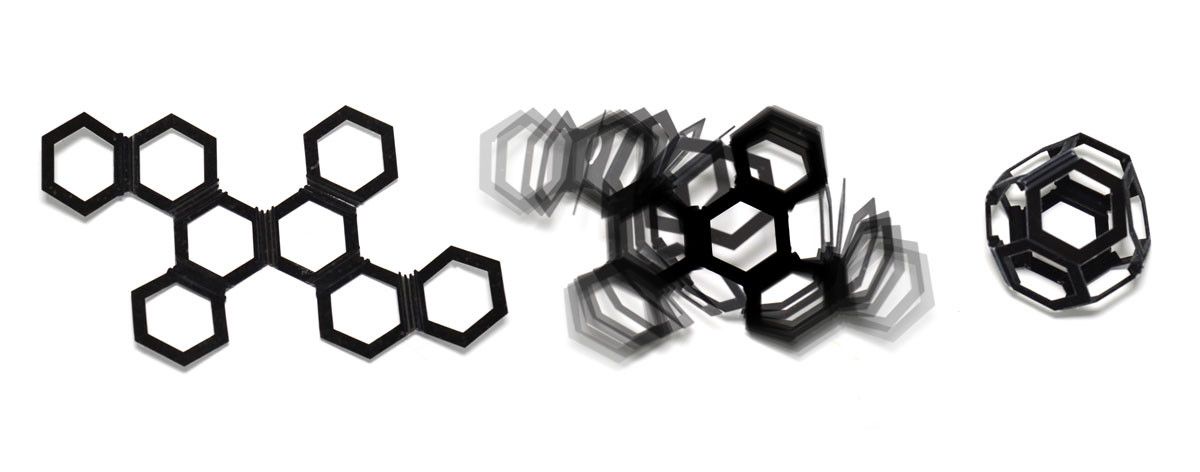 nine0003
nine0003
Another alternative is galvanization of SLA printed models. It involves applying a layer of metal to plastic using electrolysis. This combines some of the best qualities of metal (strength, electrical conductivity, corrosion and abrasion resistance) with the special properties of the base (usually plastic) material.
Plastic 3D printing is well suited for creating templates that can be cast to produce metal models. nine0003
With so many materials and options available for 3D printing, making the right choice can be difficult.
We provide a 3-step process for selecting the right material for 3D printing.
Plastics used for 3D printing have different chemical, optical, mechanical and thermal characteristics that affect the properties of 3D printed models. As you move from the intended use case to the actual operating environment, the performance requirements increase accordingly. nine0003
| Requirement | Description | Recommendations |
|---|---|---|
| Low Efficiency | Example: Prototype mold for a ladle for ergonomic testing. | FDM PLA SLA: Standard Resins, Clear Resin (transparency), Draft Resin (fast) |
| Medium Efficiency | For validation or pre-production use, printed models should have properties as close as possible to those of final production models , for functional testing, but do not meet stringent requirements regarding service life. Example: housing for electronic components to protect against sudden impacts. Functional characteristics include the ability to absorb impact energy. In addition, the body must snap into place and retain its shape. nine0003 | FDM ABS SLA: Engineering Resins SLS: Nylon 11 Powder, Nylon 12 Powder, TPU |
| High Efficiency | Final 3D printed models need to be highly stable to achieve end use products to wear and tear over a certain period of time, whether it be a day, a week or several years.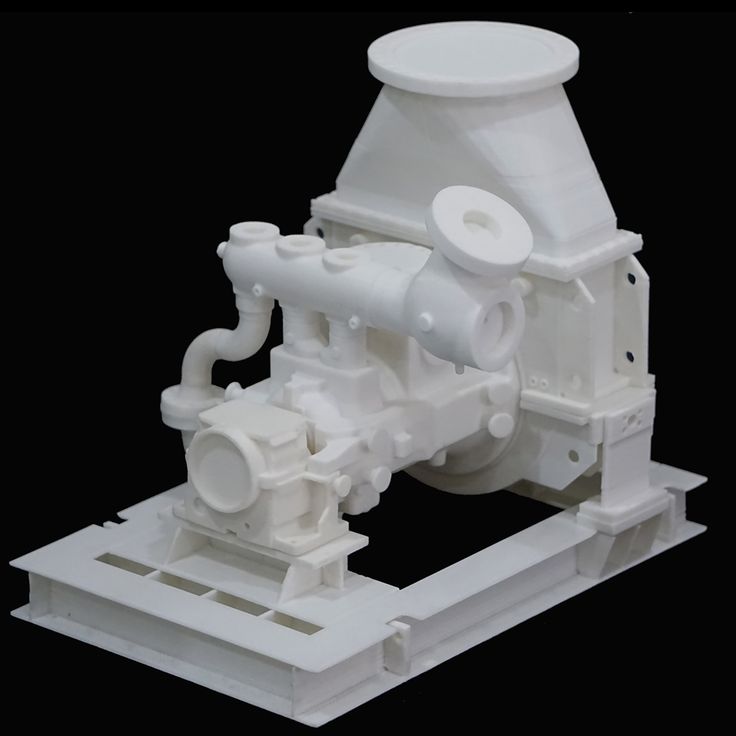 Example: shoe soles. Functional features include rigorous cycling and unloading life testing, color fastness over many years, and tear resistance, among other things. nine0003 | FDM Composites SLA: Engineering, Medical, Dental or Jewelry Resins SLS: Nylon 11 Powder, Nylon 12 Powder, TPU, Nylon Composites |
material requirements: material properties that will satisfy these requirements. These indicators are usually given in the technical specifications of the material. nine0003
| Requirement | Description | Recommendation | |
|---|---|---|---|
| Tensile strength | Resistance of material to fracture under tension. High tensile strength is important for structural, load-bearing, mechanical or static models. | FDM PLA SLA: Clear Resin, Rigid Resin SLS: Nylon 12 Powder, Nylon Composites | |
| Flex Modulus | Material resistance to bending under load.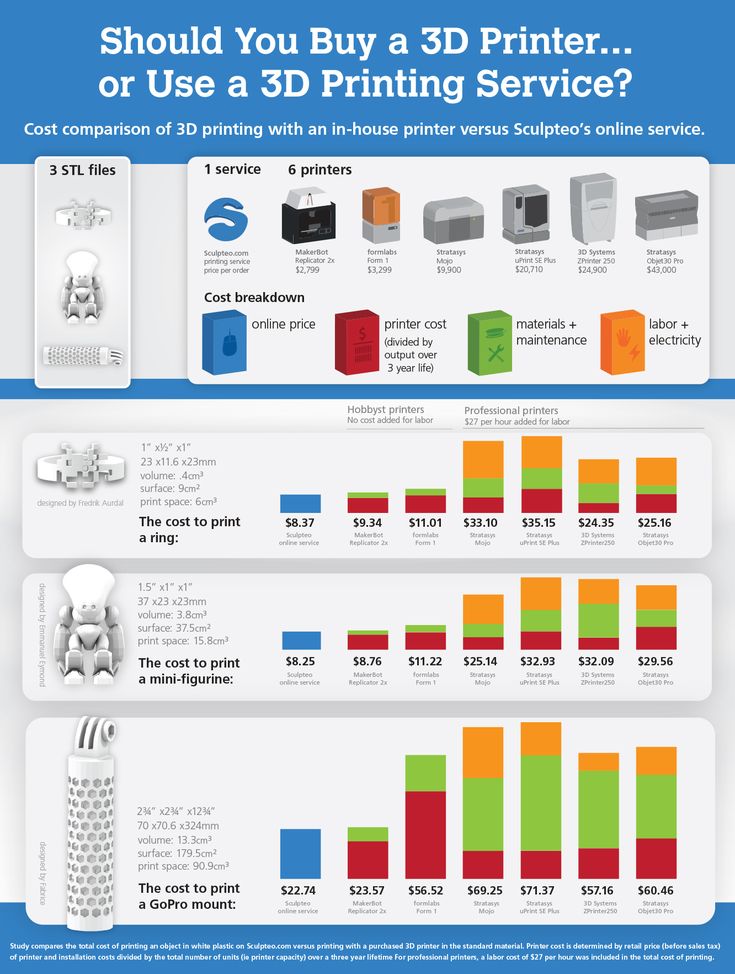 Indicates either rigidity (high value) or flexibility (low value) of the material. Indicates either rigidity (high value) or flexibility (low value) of the material. | FDM PLA (high), ABS (medium) SLA: Rigid Resin (high), Tough Resin and Durable Resin (medium), Flexible Resin and Elastic Resin (low) SLS: Nylon composite materials (high value), Nylon 12 Powder (medium value) | |
| Elongation | Material resistance to tensile failure. Allows you to compare the degree of stretching of flexible materials. It also indicates whether the material is stretched or immediately destroyed. nine0092 | FDM ABS (medium), TPU (high) SLA: Tough Resin and Durable Resin (medium), Flexible Resin and Elastic Resin (high) SLS: Nylon 12 Powder (medium), Nylon 11 Powder (medium), TPU (high) | |
| Impact strength | The ability of a material to absorb impact and its energy without breaking. Shows toughness and durability. Allows you to determine how easily the material breaks when it falls to the ground or collides with another object. nine0092 nine0092 | FDM ABS, Nylon SLA: Tough 2000 Resin, Tough 1500 Resin, Gray Pro Resin, Durable Resin SLS: Nylon 12 Powder, Nylon 11 Powder a certain load. Indicates whether the material is suitable for high temperature applications. | SLA: High Temp Resin, Rigid Resin SLS: Nylon 12 Powder, Nylon composites |
| Hardness (durometer) | Material resistance to surface deformation. Allows you to determine the right degree of plasticity for soft plastics such as rubber and elastomers for a particular application. | FDM TPU SLA: Flexible Resin, Elastic Resin SLS: TPU | |
| Tear resistance | Material resistance to notching under tension. This indicator is important for evaluating the durability and wear resistance of soft plastics and flexible materials such as rubber. nine0092 | FDM TPU SLA: Flexible Resin, Elastic Resin, Durable Resin SLS: Nylon 11 Powder, TPU | |
| Creep | Creep is the tendency of a material to permanently deform under the influence of constant stress: tension or bending, compression, shear .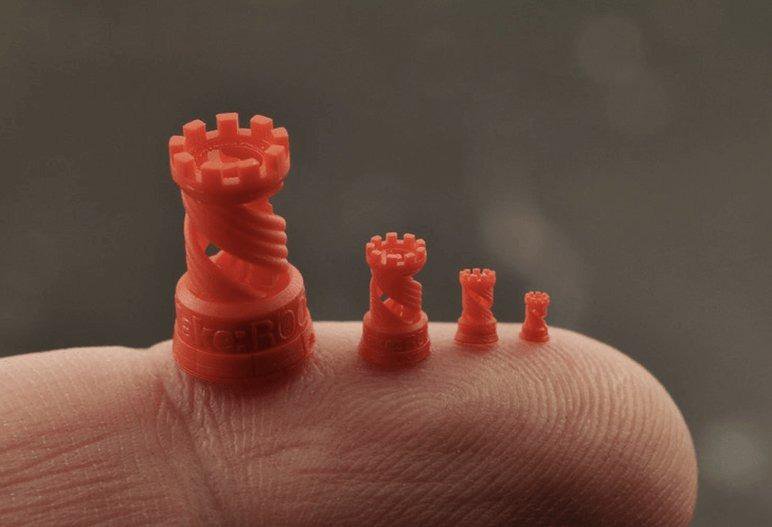 Low creep indicates durability of hard plastics and is very important for structural models. Low creep indicates durability of hard plastics and is very important for structural models. | FDM ABS SLA: Rigid Resin SLS: Nylon 12 Powder, Nylon 9 composites0092 | |
| Compression set | Irreversible deformation after material compression. An important indicator for soft plastics and applications where flexibility is needed. Indicates whether the material will restore its original shape after the load is removed. | FDM TPU SLA: Flexible Resin, Elastic Resin SLS: TPU |
For more information on material properties, see our guide to the most common mechanical and thermal properties. nine0003
By converting performance characteristics into material requirements, you can most likely find out which material, or small group of materials, is right for your application.
If several materials meet your basic requirements, a broader range of desired characteristics, as well as the advantages and disadvantages of these materials and processes, can be considered for the final selection.
Use our interactive material wizard. It will help you select the right materials from our growing range of polymers for your application and the properties that matter most to you. Do you have specific questions about 3D printing materials? Contact our experts. nine0003
Get material advice
Everything you need to know about 3D printing materials
Here's a guide to the materials used in today's industrial and home 3D printing.
When it comes to 3D printing, there is (almost) nothing impossible when it comes to materials, and researchers are constantly creating new ones.
There are certain "master" materials. The most common of these are plastics, ranging from industrial grade plastics like PEEK to very easy-to-handle plastics like PLA. Another common material is polymers, which are used in SLA printers. Composites are another category, and, as the name suggests, they are created (as if composed by a composer) by combining several materials, and the best is taken from each.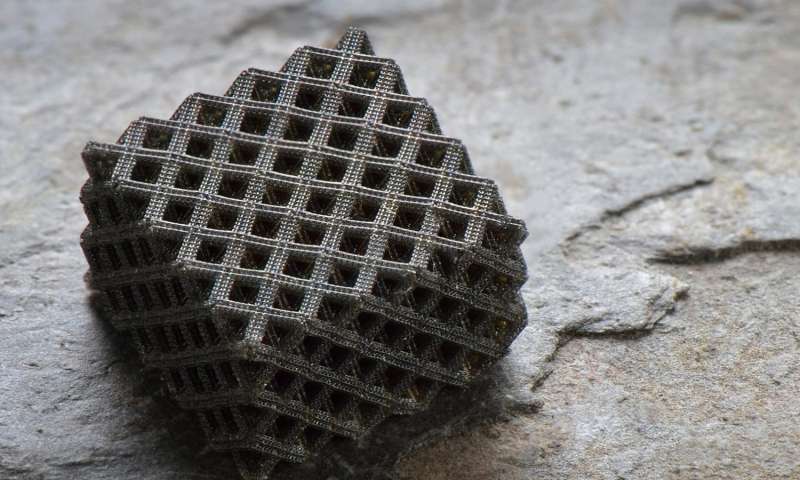 The next large group of materials are metals. They are printed only by industrial machines. nine0003
The next large group of materials are metals. They are printed only by industrial machines. nine0003
In this guide, we will only consider commercially available 3D printing materials. This means that we have excluded those that cannot be bought in the store, such as biological ones.
So, it's time to start talking about what materials you can work with in 3D printing, about their applications, properties and technologies.
Which material should I choose?
Sorry, but it depends on a lot of circumstances. For example, if you need to print a food container, you will need a 3D printing material that is also food compatible, like PETG. If you want to see in advance and on a smaller scale what will then be made as a result of injection molding, then it is not necessary to immediately use expensive materials when thermoplastics such as nylon are available. nine0003
There are also additive technologies such as Binder Jetting (jet printing with a binder) or stereolithography, which greatly expanded the range of materials used in 3D printing. Many jobs that have been the domain of manual craftsmen for centuries are now automated and can be done by anyone with even the slightest understanding of 3D printing 3D modeling. Here you can point to the wide possibilities of producing full-color concepts, architectural models and visualization of art projects from paper (SDL), sandstone (Binder Jetting) and polymers (PolyJet). Thus, it can be said that 3D printing materials have led to a kind of democratization of rapid prototyping of design ideas. nine0003
Many jobs that have been the domain of manual craftsmen for centuries are now automated and can be done by anyone with even the slightest understanding of 3D printing 3D modeling. Here you can point to the wide possibilities of producing full-color concepts, architectural models and visualization of art projects from paper (SDL), sandstone (Binder Jetting) and polymers (PolyJet). Thus, it can be said that 3D printing materials have led to a kind of democratization of rapid prototyping of design ideas. nine0003
Materials for 3D printing with metals have revealed forms and applications that were previously unimaginable. Nowadays, it is no longer surprising that the aerospace industry is creating complex one-piece structures that use less material than before, and are therefore lighter, resulting in lower fuel consumption for aircraft compared to traditional approaches.
PLASTIC
Most consumer goods today are made from thermoplastics, so this guide to 3D printing materials would be incomplete without them.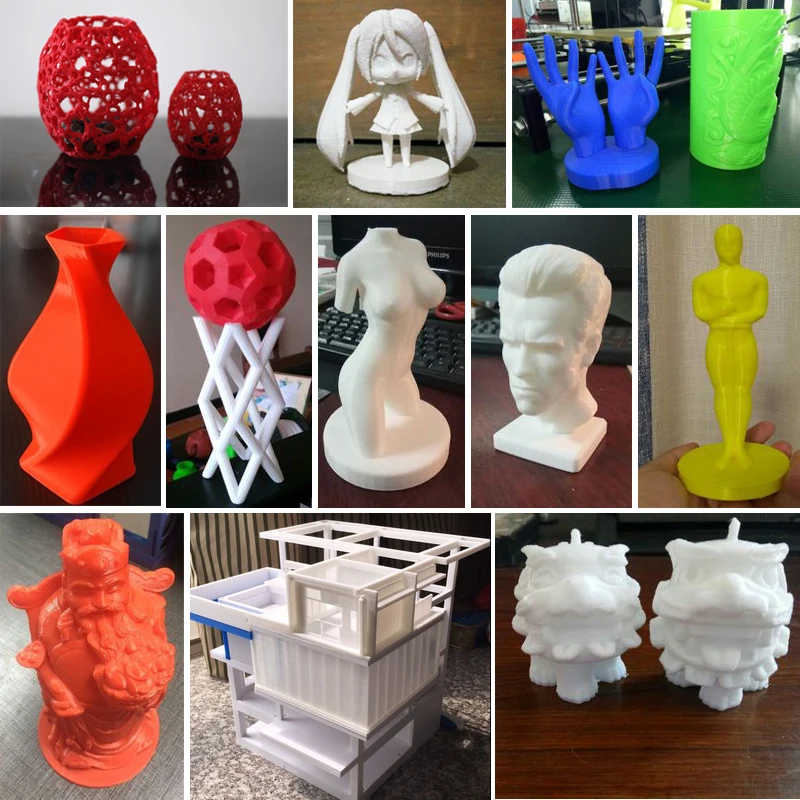 And if we talk about widespread things, then here the plastics come out in all their glory. Designers and engineers prefer to create functional prototypes from 3D printing materials with the same or very similar properties as injection molding materials, the technology that creates the final product. nine0003
And if we talk about widespread things, then here the plastics come out in all their glory. Designers and engineers prefer to create functional prototypes from 3D printing materials with the same or very similar properties as injection molding materials, the technology that creates the final product. nine0003
Most 3D printing thermoplastics can be handled at home in much the same way as professional solutions. The only thing is that some experts began to stare at laser sintering instead of filament fusing (FFF).
ABS
(Source: Wikipedia)
Do you remember the quality of Lego bricks? And this is ABS plastic, which is one of the most common materials for desktop 3D printing today.
It is completely inexpensive, strong and light. ABS filament comes in a variety of colors. There are some complaints about the smell that ABS emits when heated to its melting point, and if you're worried about that, there are alternatives like PLA. Because ABS is printed at temperatures between +220 and +250 °C, it is recommended to use a heated platform and in a closed working space so that the material cools in a controlled manner and does not warp. Also, 3D printing materials like ABS break down when exposed to atmospheric moisture, so you need to store them in airtight bags or containers. nine0003
Also, 3D printing materials like ABS break down when exposed to atmospheric moisture, so you need to store them in airtight bags or containers. nine0003
Learn more about ABS: Everything you need to know about ABS filament for 3D printing
- Technologies: FDM, resin inkjet, SLA, PolyJetting
- Features: Rugged, lightweight, high resolution, quite flexible
- Applications: architectural models, concepts, assembly models, serial production
PLA
Another crowd favorite in our guide to 3D printing materials is PLA, which is made from cornstarch (although sugar cane and tapioca are also available). This is a simple material that exudes a pleasant sweetish aroma when heated, which is why many people prefer it over ABS. In addition, it can print disposable tableware and does not shrink as much when cooled compared to ABS. However, PLA is not as durable as ABS, and is afraid of heat. Therefore, ABS is better for any working structures. nine0003
nine0003
(Source: thingiverse)
Don't Miss: PLA Durability, Biodegradability Experiment
PLA is sold in a variety of colors and is found in many composites that give it the appearance of, for example, wood or metal. Like ABS, PLA filament breaks down when exposed to moisture in the air, so store it in airtight bags or containers.
- Technologies: FDM, SLA, SLS
- Characteristics: easy to print, no toxic smell when printed, food compatible
- Applications: concepts, assembly models, functional models, serial production
Nylon (polyamide)
Due to its flexibility and strength, nylon has become a leader in a wide range of applications, from engineering to artistic. In some places it is simply called "white plastic". Nylon printouts have a rough surface that can be easily polished. Among FDM filaments, nylon has the strongest layer bonding, making it ideal for 3D printing parts that require high tensile strength and mechanical strength. Like other thermoplastics, nylon decomposes when exposed to ambient moisture and is best stored in airtight containers or bags. nine0003
Like other thermoplastics, nylon decomposes when exposed to ambient moisture and is best stored in airtight containers or bags. nine0003
- Technologies: FDM, SLS
- Characteristics: strong, smooth surface (after polishing), rather flexible, chemical resistant
- Applications: concepts, functional models, medical applications, instruments, visual arts
PEEK
PEEK is another 3D printing material designed for heavy duty parts. Plastics of this family perfectly tolerate mechanical stresses, temperature fluctuations and chemical influences. And that's not it. PEEK parts can be irradiated with X-rays and gamma rays. And with such reliability, this material is easily processed and produced. But here there is an ambush in the temperature, which in a 3D printer should reach +400 ° C, and it is better to entrust such work to professionals. In addition to high cost, security considerations can also be an argument for abandoning it. PEEK materials with their excellent properties are used in the most demanding applications - automotive, aerospace, chemical and medical industries.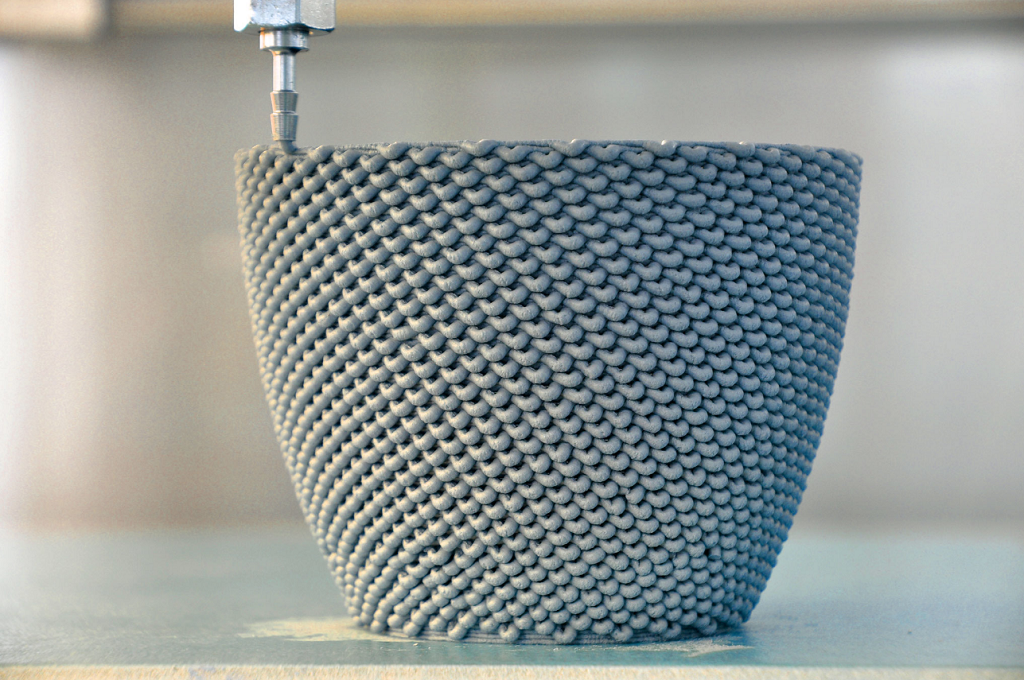 In particular, medical instruments and semiconductor components can be mentioned. nine0003
In particular, medical instruments and semiconductor components can be mentioned. nine0003
- Technologies: FDM, SLS
- Characteristics: biocompatible, very durable, heat resistant, wear resistant
- Applications: series production (automotive, aerospace, chemical and medical industries)
PET
Our next 3D printing material is PET, the material used to make plastic bottles, another alternative to ABS. Unlike ABS, PET does not stink when melted and is strong and flexible without the stench. More importantly, PET does not require heated print bed. The material gives a shiny surface, it is not hazardous to food, and this in some cases makes it a popular choice. Store PET materials for 3D printing in airtight bags or containers, the material is afraid of moisture. nine0003
- Technologies: FDM
- Characteristics: durable, food compatible, flexible, gives a smooth surface
- Applications: assembly models, mass production, functional models
PETG
PETG is a version of PET combined with glycol that has received a number of desirable properties in the 3D printing business, such as high transparency.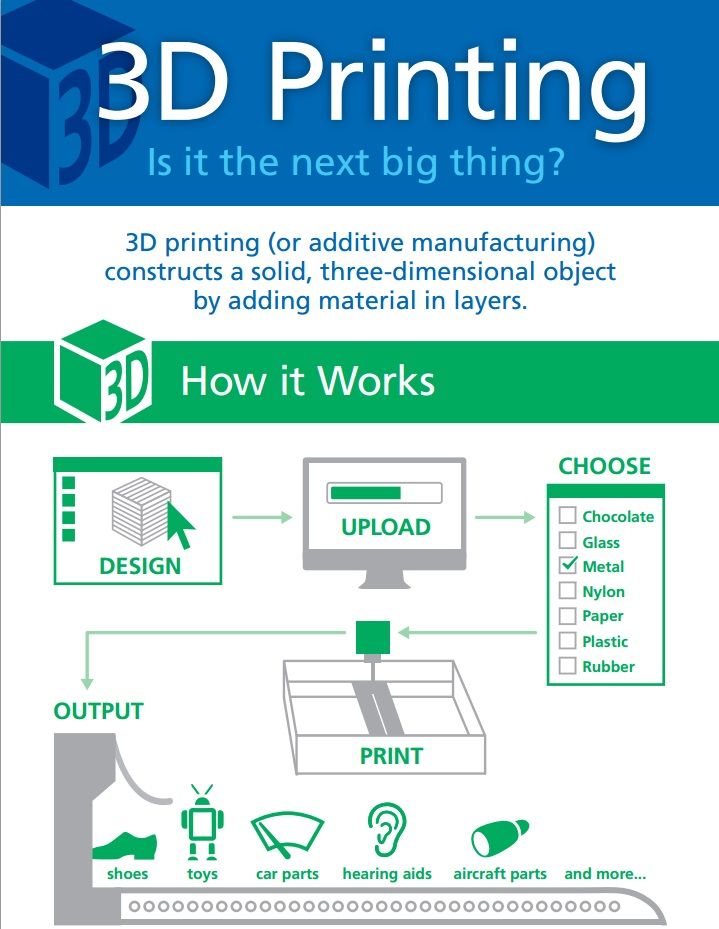 What's more, PETG materials can be printed at lower temperatures and at higher flow rates (up to 100 mm/s), which speeds up production. PETG objects are not afraid of the weather, so they can often be found in gardens. Another commercial quality is food compatibility. Store PETG in airtight bags or containers, the material is afraid of moisture. nine0003
What's more, PETG materials can be printed at lower temperatures and at higher flow rates (up to 100 mm/s), which speeds up production. PETG objects are not afraid of the weather, so they can often be found in gardens. Another commercial quality is food compatibility. Store PETG in airtight bags or containers, the material is afraid of moisture. nine0003
Don't Miss: All You Need to Know About 3D Printing with PETG Filament
- Technologies: FDM
- Features: Rugged, food grade, all weather, flame retardant
- Applications: concepts, assembly models, functional models, serial production
ULTEM
ULTEM is an amazing 3D printing material often found in demanding applications. On the one hand, the plastics of this family perfectly tolerate mechanical stresses, temperature fluctuations and chemical influences, but at the same time they are easy to process and obtain. The only problem is heat resistance, because the extrusion temperature in a 3D printer must reach +400 ° C, and for safety reasons, it is better not to do this work at home, but to entrust it to specialized 3D printing services.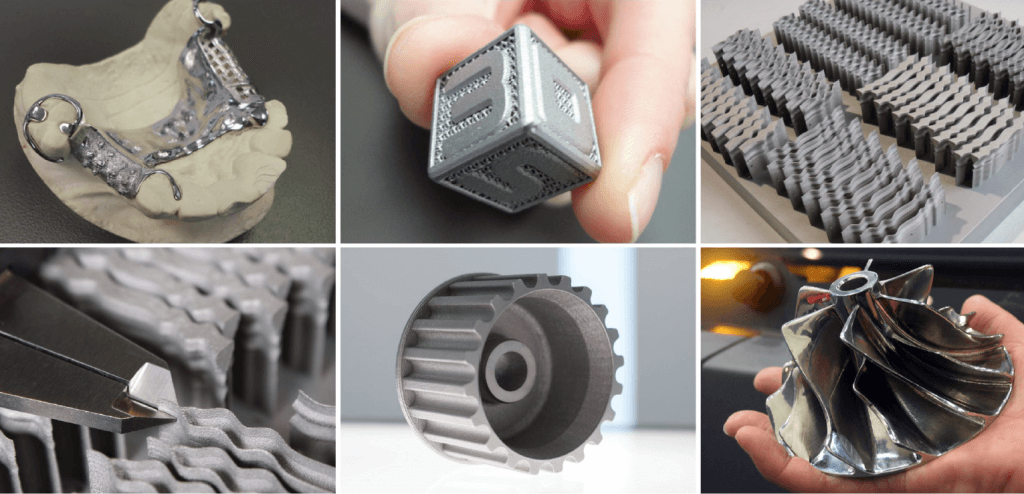 Due to its ruggedness, ULTEM is used in the most demanding applications in the automotive, aerospace, chemical and medical industries. It can be found in electrical circuits, medical instruments, and microchip sockets. nine0003
Due to its ruggedness, ULTEM is used in the most demanding applications in the automotive, aerospace, chemical and medical industries. It can be found in electrical circuits, medical instruments, and microchip sockets. nine0003
- Technologies: FDM, SLS
- Characteristics: biocompatible, very durable, heat resistant, wear resistant
- Applications: series production (automotive, aerospace, chemical and medical industries)
HIPS
HIPS has two main applications. First of all, it is often used in FDM or SLA printing as a backing material because it dissolves in a substance called limonene. With similar properties, HIPS works best in combination with ABS. But, if you decipher the name of this plastic, and HIPS is High-Impact Polystyrene, i.e. high-impact polystyrene, it becomes clear why it is also widely used for the manufacture of containers and in general where increased impact resistance is important. When printing, HIPS gives off fumes, so the room must be ventilated, especially at home. Like many other materials for 3D printing, this one is also capricious in relation to environmental conditions, so it must be stored tightly. nine0003
Like many other materials for 3D printing, this one is also capricious in relation to environmental conditions, so it must be stored tightly. nine0003
- Technologies: FDM, SLA
- Characteristics: soluble, soft to the touch
- Applications: assembly models, print stands, shipping containers
PVA
PVA, like HIPS, was designed as a soluble support material, but unlike all other similar materials, it dissolves in plain water. And, like most filaments, it needs to be stored in an airtight container.
- Technologies: FDM
- Characteristics: instant
- Applications: assembly models, printing supports
COMPOSITES
Composites are filaments made up of several materials and using the best qualities of each. PLA, for example, can be paired with everything from wood to metal. Other composites are targeted at specific industries or applications and are used, for example, in engineering applications.
Conductive
A relatively new addition to the filament shelf are 3D printed conductive materials that open up many interesting possibilities. Such materials can be used, for example, in touch panels or in MIDI instruments. Other uses for conductive composites are wearable electronics, computer-to-computer interfaces, Arduino boards, and more for DIY projects. Conductive filaments for 3D printing are usually based on PLA or ABS, each with its pros and cons. Conductive ABS is more durable and heat-resistant than PLA-based, but has the same odor issues as regular ABS. nine0003
- Technologies: FDM
- Features: conductive
- Applications: DIY projects
Metal-plastic filament
All "metal" filaments on the market are actually thermoplastics mixed with a small amount of metal. Such 3D printing materials allow you to create objects with the visual properties of these metals. Metal-plastic filaments are heavier than conventional thermoplastics.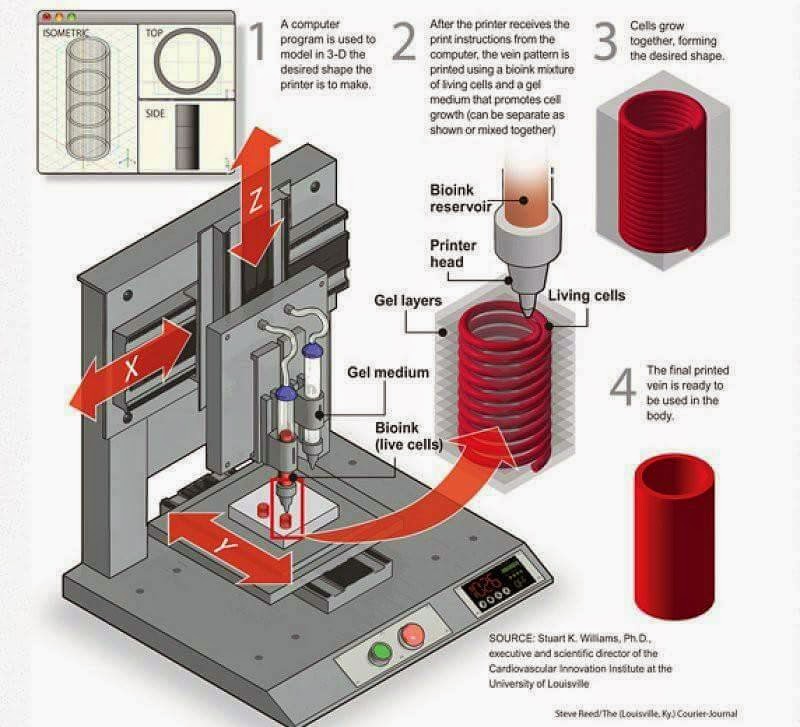 Popular composites for 3D printing are bronze, copper, steel, and iron. Keep in mind that these printouts require post-processing to make them look like metal. Also make sure your printer's nozzle can handle this material. nine0003
Popular composites for 3D printing are bronze, copper, steel, and iron. Keep in mind that these printouts require post-processing to make them look like metal. Also make sure your printer's nozzle can handle this material. nine0003
- Technologies: FDM
- Features: metal look
- Applications: fine arts
Alumide
This is a nylon variant with aluminum particles. In terms of durability and physical characteristics, it is very similar to nylon. The difference is that it is shiny, wear-resistant and has a porous surface. Objects printed with aluminium can be very precise in size, durable and long lasting. Alumide, like other similar materials for 3D printing, lends itself well to various kinds of post-processing, such as polishing and coating. nine0003
- Technologies: SLS
- Features: Rugged, heat resistant, high resolution
- Applications: DIY projects, functional prototypes, mass production
Wood
Human inquisitiveness knows no bounds, so it was only a matter of time before the engineers succeeded in adding wood fibers to plastic filament.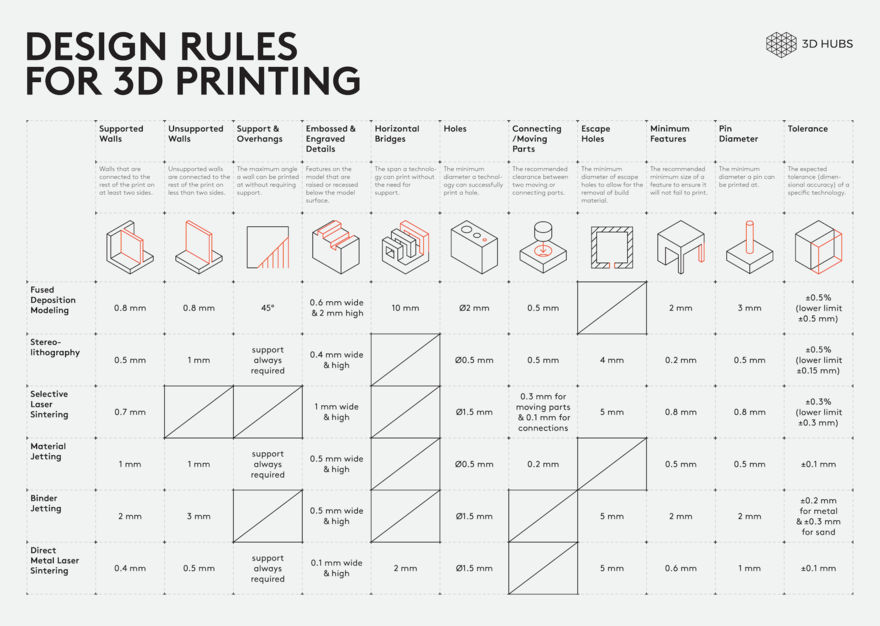 Wood 3D prints can be processed like real ones, they can be sawn, sanded and painted. And while this kind of exotic 3D printing material is aesthetically pleasing, it doesn't have the same functional characteristics as the original. For example, you will not be able to make a chair out of it. nine0003
Wood 3D prints can be processed like real ones, they can be sawn, sanded and painted. And while this kind of exotic 3D printing material is aesthetically pleasing, it doesn't have the same functional characteristics as the original. For example, you will not be able to make a chair out of it. nine0003
Interestingly, by changing the extrusion temperature, it is possible to change the shades of brown in the wood filament. 3D printing at a lower temperature produces a very light shade, while at a higher temperature it produces a solid dark brown. Therefore, if you decide to imitate growth rings in a printout, play with temperature. Depending on the brand of wood filament, the printing process may be accompanied by the smell of wood. Some manufacturers offer a wide selection of such material - birch, olive, bamboo, willow ...
- Technologies: FDM
- Characteristics: fragile
- Applications: concept models, fine arts
METALS
Our guide to 3D printing materials would be incomplete without metals. Metal 3D printing has gained particular popularity in the aerospace, automotive and medical industries for its ability to create complex designs that do not require additional welding or machining. The disadvantage of these materials is that they require a lot of experience in development and combination. nine0003
Metal 3D printing has gained particular popularity in the aerospace, automotive and medical industries for its ability to create complex designs that do not require additional welding or machining. The disadvantage of these materials is that they require a lot of experience in development and combination. nine0003
In addition, they cannot be printed at home because they require high temperatures and large, specialized printers.
Learn more about 3D printing with metals in our comprehensive article Everything you need to know about 3D printing with metals wide range of applications. Basically, we are talking about different alloys based on it. Aluminum elements can have thin walls and complex geometries, they tolerate physical stresses and high temperatures well, which is extremely important for low-cost prototypes, functional models, in particular for engines in the automotive and aerospace industries. nine0003
- Technologies: direct metal deposition, binder inkjet printing
- Characteristics: light, strong, heat-resistant, not afraid of corrosion
- Applications: functional models, series production (automotive and aerospace)
Cobalt Chrome
The next material on the list is used for very serious applications.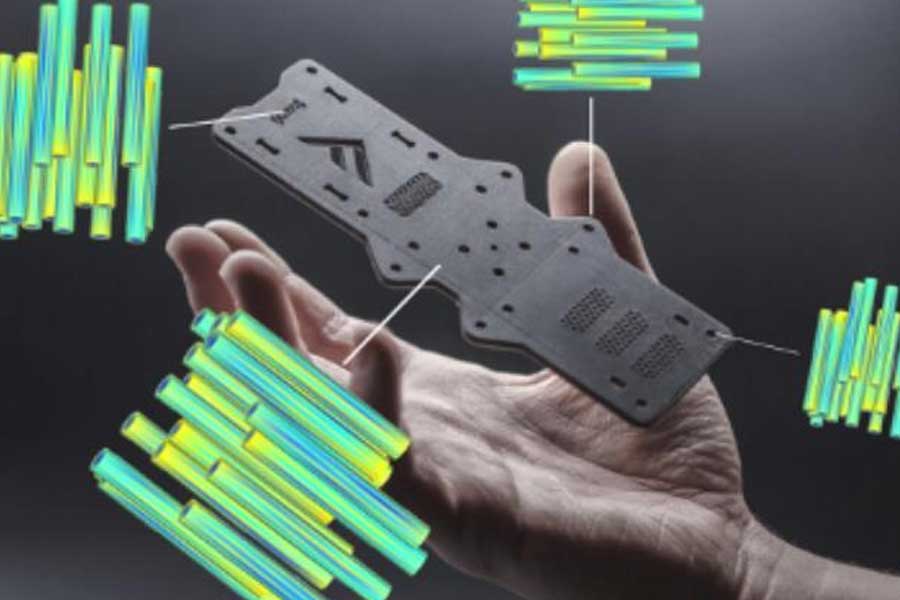 Chrome-cobalt is sometimes referred to as chromium-cobalt-molybdenum or cobalt-chromium, and sometimes simply as a superalloy. Its main use is in medical applications and in the aerospace industry, where it can be found in turbines and jet engines. It has outstanding strength, heat and corrosion resistance and is suitable for fine work. nine0003
Chrome-cobalt is sometimes referred to as chromium-cobalt-molybdenum or cobalt-chromium, and sometimes simply as a superalloy. Its main use is in medical applications and in the aerospace industry, where it can be found in turbines and jet engines. It has outstanding strength, heat and corrosion resistance and is suitable for fine work. nine0003
- Technologies: direct metal laser sintering, SLM
- Characteristics: biocompatible, durable, corrosion resistant, heat resistant, wear resistant, low electrical conductivity
- Applications: series production (medical and aerospace)
Copper and Bronze
With rare exceptions, copper and bronze are used in investment casting processes and to a lesser extent in formed bed sintering. Due to their electrical conductivity, they are often used in electrical engineering. They are also very popular as art materials and with artisans. nine0003
- Technologies: investment casting, formed layer sintering, direct metal deposition
- Characteristics: electrical conductivity, wear resistance
- Applications: series production (electrical engineering), fine arts
Inconel
Inconel is a super alloy designed for the most extreme conditions. It consists mainly of nickel and chromium and is extremely heat resistant. Also resistant to extreme pressures, Inconel is indispensable in the production of aircraft black boxes and even rocket engine parts. Even more often, these features are used in solutions for the oil and chemical industries. The material is very strong and difficult to process, so direct laser sintering is preferred to obtain products of the desired shape. nine0003
It consists mainly of nickel and chromium and is extremely heat resistant. Also resistant to extreme pressures, Inconel is indispensable in the production of aircraft black boxes and even rocket engine parts. Even more often, these features are used in solutions for the oil and chemical industries. The material is very strong and difficult to process, so direct laser sintering is preferred to obtain products of the desired shape. nine0003
- Technologies: direct metal laser sintering
- Characteristics: heat resistant, wear resistant
- Applications: Petroleum, chemical and aerospace industries
Nickel
Nickel alloys are popular for 3D printing applications. Nickel alloy elements are stronger and more durable than traditional methods such as casting. This, in turn, allows engineers to create thinner parts, leading to more fuel-efficient aircraft, for example. There are many types of alloys that combine the characteristics of nickel and other materials such as monel or inconel.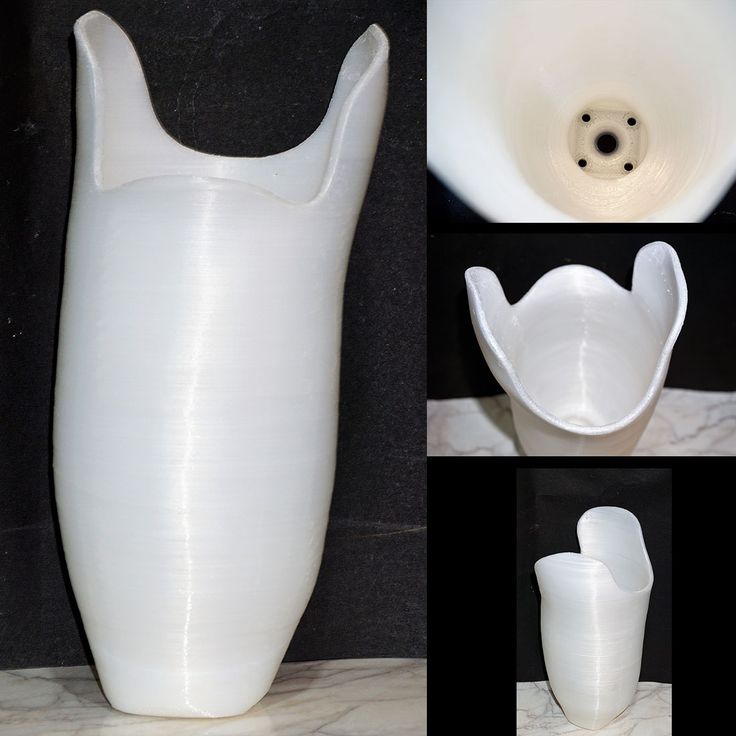 nine0003
nine0003
- Technologies: formed bed sintering, direct metal deposition
- Features: strong, lightweight
- Applications: series production (automotive and aerospace)
Precious metals (gold, silver, platinum)
Most formed bed sintering companies can work with precious metals such as gold, silver and platinum. Here, in addition to the aesthetic qualities of materials, it is very important not to lose a single crumb of precious powder. Therefore, such parts are more often produced where a more easily controlled investment casting technology is used. Precious metals are used as materials for 3D printing in jewelry, medical solutions and electronics. Depending on the technology used, some of these materials may be used for casting. nine0003
- Technologies: Formed-bed sintering, investment casting, bonded inkjet printing
- Features: high resolution, smooth surface
- Applications: jewelry, dentistry, functional models
Stainless steel
If you're looking for cheaper metal in this guide to 3D printing materials, it's stainless steel. It is also very durable and can be used in many industrial and even artistic applications. Stainless steel alloys containing cobalt or nickel are extremely difficult to break, but have excellent elasticity and good magnetic properties. If you need a different color - please: steel can be coated, for example, with gold. The materials in question are mainly used for industrial purposes. nine0003
It is also very durable and can be used in many industrial and even artistic applications. Stainless steel alloys containing cobalt or nickel are extremely difficult to break, but have excellent elasticity and good magnetic properties. If you need a different color - please: steel can be coated, for example, with gold. The materials in question are mainly used for industrial purposes. nine0003
- Technologies: direct metal deposition, binder inkjet printing
- Characteristics: high resolution, corrosion resistance, some flexibility, strength
- Applications: tools, function models, mass production
Titanium
Pure titanium powder is often used in 3D printing. This is one of the most versatile materials - it is both durable and lightweight. They work with it using the technology of sintering in the formed layer or inkjet printing with a binder. It is most commonly found in demanding medical solutions, such as custom-made prostheses. Other uses for this material are parts and prototypes for aerospace, automotive and tool manufacturing. In addition to the price, it has another unpleasant feature - its powder explodes easily. Therefore, they print in a vacuum or in argon. nine0003
Other uses for this material are parts and prototypes for aerospace, automotive and tool manufacturing. In addition to the price, it has another unpleasant feature - its powder explodes easily. Therefore, they print in a vacuum or in argon. nine0003
- Technologies: formed bed sintering, binder inkjet printing, direct metal deposition
- Features: biocompatible, high resolution, heat resistant, high wear resistance
- Applications: tools, function models, mass production (automotive, aerospace and medical)
CERAMIC
(Source: SONY DSC)
Ceramic is such a popular material for 3D printing in specialized services that custom-made coffee mugs, for example, have become commonplace. And with specialized extruders such as the WASP Clay 2.0, ceramics are also relevant in home 3D printing. nine0003
Clay consists of kaolinite and some other minerals, as well as a certain amount of water, which gives it plasticity. After the ceramic piece is printed, it is cured in an oven. The water evaporates and the minerals fuse together, maintaining the object's shape and strength. To make the printout shine, it is covered with glaze and placed in the oven again.
The water evaporates and the minerals fuse together, maintaining the object's shape and strength. To make the printout shine, it is covered with glaze and placed in the oven again.
Ceramics can be printed using both conventional FDM technology and complex methods such as SLA. Beginning "potters" are offered a choice: glass, porcelain or carborundum (silicon carbide). The resulting products are distinguished by heat resistance and wear resistance and today most often act as works of art, as well as dishes and dentures. nine0003
- Technologies: FDM, binder inkjet, SLA
- Characteristics: heat resistance, wear resistance, brittleness, porous surface
- Applications: fine arts, serial production (dishes, dentistry)
WAX
Wax 3D prints are not usually the final product, but they are an important step in a long journey. They are relevant for very high resolution molding (0.025 mm), as well as for investment casting. They are often used in the creation of custom-made jewelry, and at a relatively low price. Another industry that uses this kind of 3D printing materials is dentistry. When creating complex structures, wax, due to its low melting point, is an excellent material for props. nine0003
Another industry that uses this kind of 3D printing materials is dentistry. When creating complex structures, wax, due to its low melting point, is an excellent material for props. nine0003
- Technologies: SLA, PolyJet
- Features: high resolution, smooth surface
- Applications: mass production (jewelry, dentistry)
PAPER
With selective deposition lamination (SDL) technology, good old stationery around the corner finds its niche in 3D printing. SDL objects are tree-like, full-color, and this makes them popular in architectural and other conceptual models. On the other hand, parts made from SDL are not as strong as those made from other materials and do not have the level of detail that those made from PolyJet plastic or plaster. nine0003
- Technologies: Selective Deposition Lamination
- Features: Cost effective, Recyclable, Full color
- Applications: concept models, fine arts
SANDSTONE
Sandstone as a printing medium is sometimes referred to as gypsum (in fact, gypsum is a component of natural sandstone) and is used to create impressive full-color objects in one process. To enhance the color and add strength, the printouts are covered with a protective layer of epoxy, without this the moisture will do its job and the sandstone will discolour. Objects turn out to be fragile, like porcelain, and this must be taken into account at the design stage. Bearing in mind the capriciousness of sandstone, it is mainly used in architectural models, concept prototypes and art projects. nine0003
To enhance the color and add strength, the printouts are covered with a protective layer of epoxy, without this the moisture will do its job and the sandstone will discolour. Objects turn out to be fragile, like porcelain, and this must be taken into account at the design stage. Bearing in mind the capriciousness of sandstone, it is mainly used in architectural models, concept prototypes and art projects. nine0003
- Technologies: FDM, binder inkjet, formed bed sintering
- Features: fragile, full color
- Applications: concept models, fine arts
(PHOTO)POLYMERS
(Photo: Nervous System)
Photopolymers are a type of liquid resin that hardens when exposed to ultraviolet (UV) electromagnetic radiation or visible light. Today, they work mainly on two technologies - SLA (stereolithography) and PolyJet. SLA uses a UV laser to project a slice of an object onto the surface of a photopolymer poured into a bath, which solidifies into the shape of the object's layer.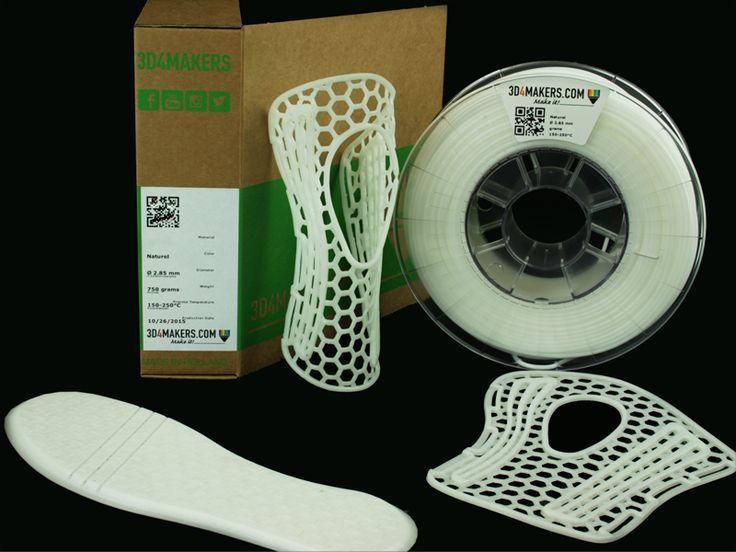 This is repeated for all layers. nine0089 PolyJet technology takes a different approach. The printer directs a jet of resin onto a substrate, on which the resin is continuously cured by a UV lamp. SLA prints layers no thinner than 0.1 mm, and PolyJet produces up to 16 microns. And although the methods are similar and they use similar materials, the big difference lies in the methods of working with materials.
This is repeated for all layers. nine0089 PolyJet technology takes a different approach. The printer directs a jet of resin onto a substrate, on which the resin is continuously cured by a UV lamp. SLA prints layers no thinner than 0.1 mm, and PolyJet produces up to 16 microns. And although the methods are similar and they use similar materials, the big difference lies in the methods of working with materials.
All photopolymers are sensitive to sunlight.
SLA Resins
Many SLA Resins are designed to mimic the different properties of the "traditional" materials discussed above. For example, there are materials that are compatible with wax, they are used to create impressions in investment casting. And if biocompatibility is important, then there are thermoplastics for SLA, which are very similar to PLA. Other SLA plastics can be as strong as ABS. There are even composite materials for SLA printing that have the properties of ceramics: the objects obtained on the printer can be put in an oven and then treated like ceramic.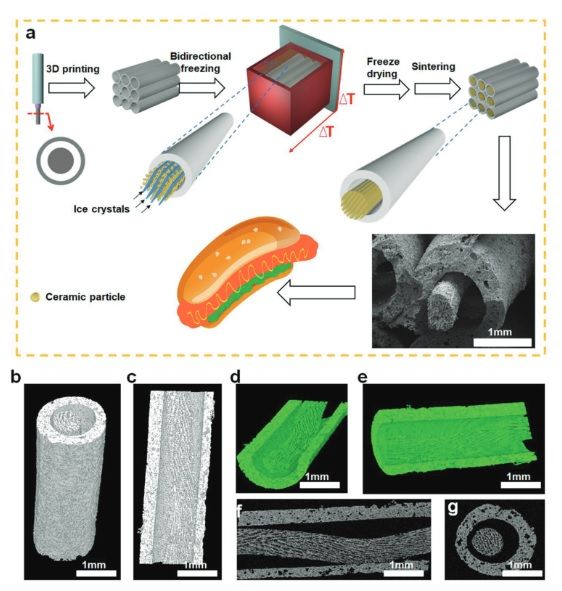 nine0003
nine0003
Resins are an excellent choice for functional and conceptual models. They are especially good if you want to get a large object in a short time, while with a high level of detail. Some polymers even become hard enough for machining after quenching. In addition, high-temperature polymers are a cost-effective replacement for mold materials for low-volume moldings.
The popularity of the SLA process lies in its excellent speed and accuracy. The downside is that polymers are still significantly more expensive than everything that was mentioned here. nine0003
SLA printers are sold, you can work with them both at home and in a small office and use very interesting materials for semi-professional 3D printing.
- Technologies: SLA
- Characteristics: smooth surface, some flexibility
- Applications: concept models, functional models, fine arts, tools (prototypes)
PolyJet resins
(Source: Printshow)
Like SLA resins, PolyJet materials mimic the different properties of "traditional" 3D printing materials. Most PolyJet resins have fairly descriptive names. For example, rigur is designed for strength and sounds similar to the Latin root for hardness. It is also called "simulated propylene" for the similarity of the surface and functionality. A number of 3D printing materials are referred to as "digital ABS" because they are heat resistant and durable. Rubber-like materials are designed for non-slip surfaces and to absorb vibrations. Since there are so many PolyJet polymers, we decided to refrain from a detailed description of each of them. nine0003
Most PolyJet resins have fairly descriptive names. For example, rigur is designed for strength and sounds similar to the Latin root for hardness. It is also called "simulated propylene" for the similarity of the surface and functionality. A number of 3D printing materials are referred to as "digital ABS" because they are heat resistant and durable. Rubber-like materials are designed for non-slip surfaces and to absorb vibrations. Since there are so many PolyJet polymers, we decided to refrain from a detailed description of each of them. nine0003
It should be noted, however, that PolyJet polymers differ from SLA in that they allow obtaining the so-called. digital materials. These are mixtures of up to three 3D printing materials to obtain specific properties (strength, heat resistance, transparency, etc.) for a specific part and in a specific color range. This is a bright path to radiant prospects. While other materials described in this review allow you to create only a visual imitation of "traditional" objects, objects from PolyJet can also imitate tactile sensations, actually replacing reality.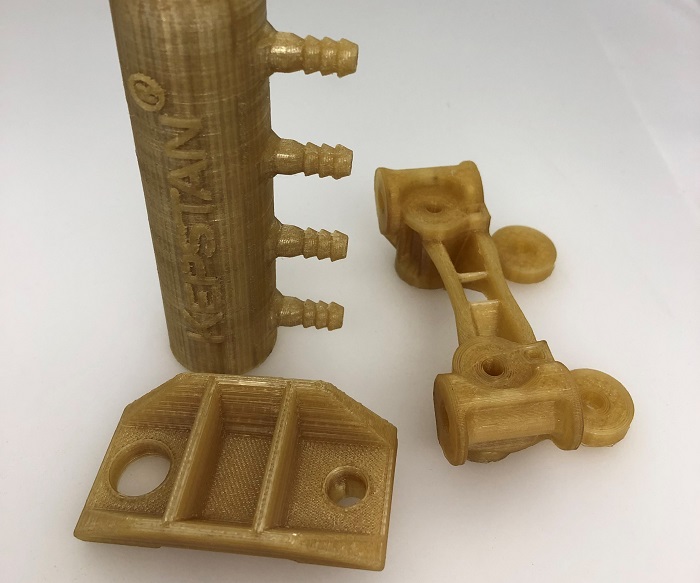


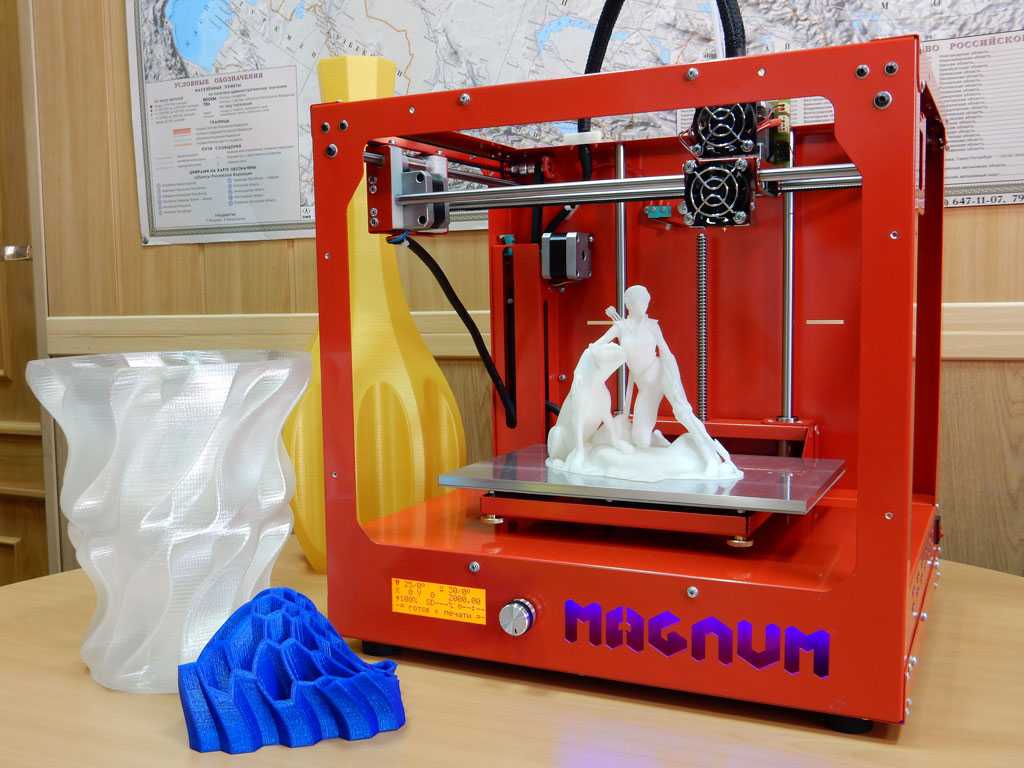 Performance requirements include strict lifetime testing with cyclic loading and unloading, color fastness over periods of years, amongst others like tear resistance.
Performance requirements include strict lifetime testing with cyclic loading and unloading, color fastness over periods of years, amongst others like tear resistance.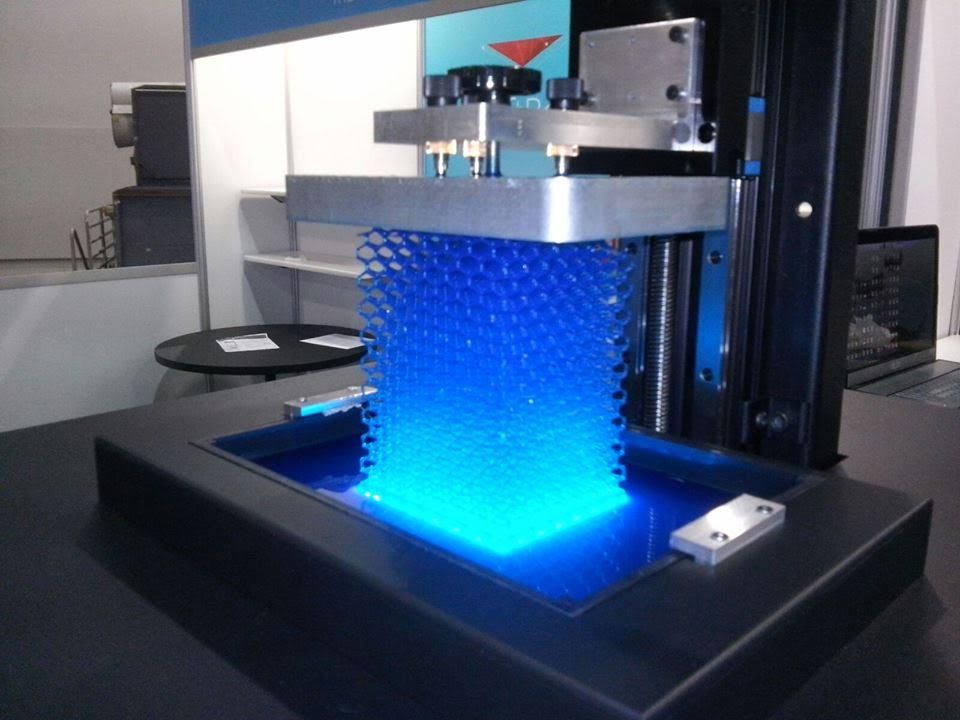 Other than surface quality, there are no performance requirements. nine0003
Other than surface quality, there are no performance requirements. nine0003 



